
CONTENT MAGAZINE, SAN JOSE $9.95 Silicon Valley’s Innovative and Creative Culture ISSUE 11.1 March/April 2019 C
SIGHT
KIA FAY Singer & Stylist
AND SOUND Featuring Loma Brewing Company | Redwall Studio | Spotlight San Jose | KKUP Radio
ISSUE 11.1
“Sight and Sound”
March / April 2019
Cultivator
Daniel Garcia
Editors
Elizabeth Sullivan, Justin Sun
Samantha Tack, Grace Olivieri
Linnea Lukatch, Lisa Mendricks
Rah Riley
Circulation/Distribution
Elle Mitchell
Community Partnerships
Photographers
Arabela Espinoza, Brian Rampas
Writers
Brandon E. Roos, Demone Carter
Michelle Runde, Nathan Zanon
Johanna Hickle, Peter Hsieh
Brad Sanzenbacher, Esther Young

Allen Johnson, Taran Escobar-Ausman
Hannah Duchesne, Jeff Brummet
Brandon Yu, Yale Wyatt
Kevin Marks, Diane Solomon
Kristen Pfund Publisher SVCreates
This issue of Sight and Sound demonstrates the flavorful ethos of the South Bay. One piece that represents the spirit and the eclectic tastes of this issue is Diane Solomon’s profiles of community support radio KKUP. This issue, like all of our editions, is not enslaved by style or genre. Instead, we seek to bring you to each corner of creative expression found within the communities of Silicon Valley. Within these pages, meet a folk songwriter and hip-hop lyricist; interior designer and UX designer; comedians and audio technicians—may these introductions broaden your palate as well as your appreciation.
Enjoy.
Daniel Garcia THE CULTIVATOR
CONTENT To participate in CONTENT MAGAZINE: daniel@content-magazine.com Subscription & advertising information available by contacting elle@content-magazine.com IN THIS ISSUE Loma Brewing Company | Redwall Studio | Spotlight San Jose | KKUP Radio CONTENT MAGAZINE is a bimonthly publication about the innovative and creative culture of Silicon Valley, published by . 501(c)(3)
C
works is your community art and performance center, a welcoming space where you can experience and create exhibits and events.


next at works:
evocation made real opening reception: friday, march 1, 7–10pm exhibition: march 2–april 7, 2019 art and site specific installations with artists gloria huet, bill gould, and judy rookstool. shifting tides: a convergence in cloth exhibition: april 19–may 5, 2019 fiber art from the bay area to around the pacific rim on ocean life and environments. experimental animation (title to come) exhibition: may 17–june 9, 2019 70 graduates from sjsu’s animation program.

works is a creative laboratory where artists, audience, and ideas interact to expand the scope of cultural experience.
works/san josé 365 south market street exhibits and exhibit guidelines: workssanjose.org facebook, twitter, instagram: workssanjose

CULTURE
CONTENT
SIGHT AND SOUND 11.1
March / April 2019 San Jose, California
08 Urban Innovation Network, American Leadership Forum
ART & DESIGN
12 Branding Series: Visual Brand by Native Digital, Hannah Duchesne

16 Tangible UX, James Young
20 Chi Creative, Lailani Africa
24 Interior Designer, Pamela Pennington
28 Loma Brewing Company, Dan Reineke & Brogan Hunter

32 AC Hotel, Mike Lerman
36 Spotlight San Jose, Ramona Giwargis & Josh Barousse
SIGHT
40 Photographer, Dan Fenstermacher
48 Image-Maker and Educator, John Delacruz
54 Sports Broadcaster, Brodie Brazil
58 Cineteller Productions, Troy and Madison Campione
SOUND
60 Redwall Studio, Sunny Loera
64 Greaseland Studio, Kid Andersen
66 Musician/Producer, Jerry Dalalo
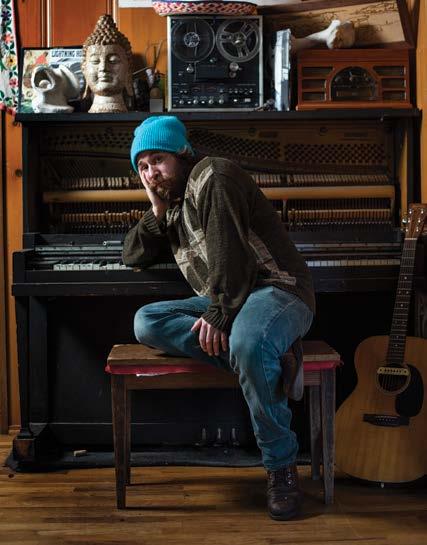
68 Singer and Stylist, Kia Fay
72 Super Stacked Comedy Show, Ryan Sudhakaran, Tyler Stannard, Grayson Garcia & Austin Blaylock

76 Community Radio, KKUP
82 Miguel Kultura, Juan Miguel Saucedo 86 Folk Musician, Joe Kaplow 88 Album Picks, Needle to the Groove
90
94 Contributors
Cinequest 2019 Guide 92 Calendar
Super Stacked Comedy Crew, pg. 72
Loma Brew, pg. 28
Joe Kaplow, pg. 86
materials in CONTENT MAGAZINE are protected by United States copyright law and may not be reproduced, distributed, transmitted, displayed, published, broadcast, or modified in any way
the prior written consent of Silicon Valley Creates, or in the case of third party materials, the owner of that content. You may not alter or remove any trademark, copyright or other notice from copies of this content. For further information, or to participate in the production or distribution, please
Kia Fay, pg. 68
All
without
contact us at editor@content-magazine.com

Deliberately pushing leaders into deep dialogues gave them the opportunity to think outside of the box and collaborate on solutions to some of San Jose’s most complex problems.
Urban
alfsv.org | 1400 Parkmoor Avenue, #280, San Jose, CA 95126 Facebook: alfsiliconvalley | Twitter: alfsv AMERICAN
Innovation Network
LEADERSHIP FORUM
8 Sight & Sound 11.1
Written by Peter Hsieh | Photography by Daniel Garcia

 Chief Executive Officer Suzanne St. John-Crane
Chief Impact Officer Jenny Niklaus, MA, LMFT
Chief Executive Officer Suzanne St. John-Crane
Chief Impact Officer Jenny Niklaus, MA, LMFT
“We’re at a critical juncture in our evolution, and the startup buzz of possibilities is palpable. I experienced it when I came here in 2008 to build CreaTV San Jose,” recalls Suzanne St. John-Crane, former CEO of CreaTV and current CEO of American Leadership Forum - Silicon Valley. “This is the only city I’ve lived in where I felt like it was easy to plug in immediately and help to shape its future.” Despite the city’s accessibility, American Leadership Forum and other leaders in the community saw the need for networks to be purposefully created and nurtured in order to fully realize San Jose’s potential. St. John-Crane was invited to be a part of the first Urban Innovation Network class while running CreaTV San Jose and saw the value of connecting sectors in deep relationship in order to accelerate impact. During her class, she became the CEO of American Leadership Forum.
American Leadership Forum’s Silicon Valley chapter was founded in 1988 by Ann DeBusk, who saw a need to bring together diverse leaders from different sectors and communities to explore their personal leadership capacity; build trusting, supportive networks; and learn how they can coalesce around issues and discover new possibilities. American Leadership Forum’s impressive alumni network of over 700 hundred senior fellows include former
United States Congressman Mike Honda, NFL Hall of Famer Ronnie Lott, and Netflix cofounder and CEO Reed Hastings.
“There was a feeling among city officials, members of the community, and American Leadership Forum senior fellows that San Jose was not realizing its full potential as a city. We needed a network of leaders that did not exist before to drive critical changes and innovations in the areas of art, community engagement, and cultural preservation,” Jenny Niklaus explains. In 2015, with funding from the Knight Foundation and support from SPUR, SVCreates, and the City of San Jose, American Leadership Forum launched the Urban Innovation Network, bringing together demonstrated leaders to address the revitalization of downtown San Jose and its surrounding neighborhoods. Four unique classes were created, with the objective of establishing an inspired network of urban leaders from diverse backgrounds to improve downtown San Jose. Today the network is 77 senior fellows strong.
Utilizing the practices and teachings from American Leadership Forum’s classic classes—network theory and innovative thinking—the Urban Innovation Network came together to find answers to some of our city’s most challenging questions: How can the network lead the charge in embrac-
ing an urban mindset? What will urbanism look like in San Jose? How can we connect, activate, and promote the neighborhoods and assets surrounding downtown? How do we dive into and lead the tough dialogues about gentrification, cultural preservation of neighborhoods, and embracing change?
One of the most prevalent problems that cities face in regards to civic and community engagement is that relationships are siloed, oftentimes based on historical factors. It can be difficult for someone new to participate and have an impact. The Urban Innovation Network aims to break these silos and create a more equitable way for people to access these relationships and connect across sectors.
Supporting innovation, art, and culture in neighborhoods requires that community leaders, nonprofits, and city leaders work differently than they have in the past. Achieving the right mix of people within these classes was of the utmost importance, and it was a task that American Leadership Forum approached with great care. “We made sure that all four of our Urban Innovation Network classes had at least three City of San Jose leaders in order to create those critical connections,” says Niklaus. “The City of San Jose was a critical partner in that they supported the staff time to be a
10
10 Sight & Sound 11.1
Through a circuitous path that included career changes, ping-ponging between SoCal and NorCal, a transatlantic hop, a failed marriage, and resurrecting herself like only a true phoenix can, Pamela would later become a redhead and one of the Bay Area’s most respected interior designers.
Pamela grew up in Los Angeles, and, because she was a surfer, earned the nickname Gidget. Her mother attended UCLA for a year but had to drop out of school to help support the family during the Great Depression. Though she was devastated, she held on to the dream that her daughter would later have the opportunity that she had lost. So, she encouraged Pamela to attend college, and it was decided that she would head north to San Jose State, enrolling in the art department. When she arrived, the faculty reviewed a list of potential careers for their graduates, one being interior design. The young Miss Gaynor, who had been decorating her room since she was five, thought, “This is it.” She went on to learn how to render architectural drawings in watercolor with two-point perspective and studied an abundance of design and color theory.
After graduation, Pamela returned to Southern California but found that brief stints in her chosen field were disillusioning, so she began searching for a new career. Dabbling in the primary options for women in the 1960s, Pamela became a secretary—at which she was a disaster—before returning to school for her teaching credential in art. Pamela laughs at this last experiment: “Here I was with my Sassoon haircut, my miniskirts, my fishnet stockings, and enormous watch—totally different from all the other women in my program.” So when she received a phone call from a local interior designer saying she needed help, that was the end of Pam’s teaching career.
However, this chapter ended when a girlfriend—in hot pursuit of a Stanford doctor she’d fallen for—convinced Pamela to move to Palo Alto with her. When Pamela arrived back in NorCal, she accompanied her friend to buy a sofa at a store called House
When 17-year-old Pamela Gaynor arrived in San Jose, she wore a girdle, hat, and gloves to sorority rush interviews. The year was 1960, and a sudden heat wave had Miss Gaynor sweating from the wool dress her mother purchased in LA for San Jose’s northern climate, exacerbated by the intense scrutiny she was receiving to determine whether she was worthy to join the Greeks’ elite ranks. She was chosen as a Delta Gamma, because, as Pamela theorized, “I looked like a DG girl. Back then, I was blonde and blue eyed—and all DGs were blonde and blue eyed.”
part of this network.” Through the development of the network, things began to shift, both in actual tangible benefits but also in the way in which people felt about the work and each other.
It has been over three years since American leadership Forum - Silicon Valley launched the Urban Innovation Network. We can see some of the progress and policy changes that have resulted from the collaborations, conversations, and projects born from that network. Deliberately pushing these leaders into deep dialogues gave them the opportunity to think outside of the box and collaborate on solutions to some of San Jose’s most complex problems.
Through a circuitous path that included career changes, ping-ponging between SoCal and NorCal, a transatlantic hop, a failed marriage, and resurrecting herself like only a true phoenix can, Pamela would later become a redhead and one of the Bay Area’s most respected interior designers.
Pamela grew up in Los Angeles, and, because she was a surfer, earned the nickname Gidget. Her mother attended UCLA for a year but had to
drop out of school to help support the family during the Great Depression. Though she was devastated, she held on to the dream that her daughter would later have the opportunity that she had lost. So, she encouraged Pamela to attend college, and it was decided 7.5
She went on to learn how to render architectural drawings in watercolor with two-point perspective and studied an abundance of design and color theory.
together with the goal of making event production more accessible. Demone Carter and Jim Reber, along with Ryan Sebastian and Blage Zelalich, worked to create a fast track permitting process for events in the city. They wanted to create certain changes in public policy to make it easier for smaller organizations to hold events and activate public spaces within the city. The result was a streamlined process for small events in the plazas and paseos with the goal of expanding this process to parks.
After graduation, Pamela returned to Southern California but found that brief stints in her chosen field were disillusioning, so she began searching for a new career. Dabbling in the primary options for women in the 1960s, Pamela became a secretary—at which she was a disaster—before returning to school for her teaching credential in art. Pamela laughs at this last experiment:
One collaboration born out of this network was Viva San Jose, a group working to create cultural activations of public space through events and happenings. Members include Fil Maresca, Barbara Goldstein, Ryan Sebastian, Omar Rodriguez, and Ed Solis. Primarily, the group worked to partner with the city to think about how to expand the event beyond one day. The goal was to activate the culture and art throughout different neighborhoods. This idea was prototyped at last year’s Viva Calle, which included an evening-time party in the SoFA District.
“Here I was with my Sassoon haircut, my miniskirts, my fishnet stockings, and enormous watch—totally different from all the other women in my pro -
Another group within the network came
gram.” So when she received a phone call from a local interior designer saying she needed help, that was the end of Pam’s teaching career.
However, this chapter ended when a girlfriend—in hot pursuit of a Stanford doctor she’d fallen for—convinced Pamela to move to Palo Alto with her. When Pamela arrived back in NorCal, she accompanied her friend to buy a sofa at a store called House of Today. The design fanatic had never seen anything like the modernist aesthetic displayed. Again, the little voice said, “This is it.” She went home, changed her clothes, and came back to apply for a job.
A third collaboration, PAC for the Common Good, formed to provide San Jose with a new option for political action, empowering leaders and supporting issues that will benefit the common good. This group includes Camille Llanes-Fontanilla, Barbara Goldstein, Marci Gerston, Ricardo Benavidez, Charisse Ma Lebron, Kathy Sutherland, and Teresa Alvarado. The group hosted the Santa Clara County Sheriff Candidates Forum in partnership with the Jewish Community Relations Council of the Jewish Federation of Silicon Valley, and Temple Emanu-El.
“American Leadership Forum created the Urban Innovation Network, but the work and the progress belongs to the leaders in that network and the community members that helped make the network
She was becoming inculcated in the oeuvre of House of Today, whose clients owned Eichlers Homes, when one day, a British architecture student walked in wearing a neck kerchief and pink corduroy trousers. This was Richard Pennington, and he was looking for a job. Like a scene from a romcom, Pamela invited Richard and his two British mates home for dinner with
herself and her two female roommates. The California girls watched in amusement as their guests tried to eat tacos with a knife and fork.
possible,” Niklaus says. “We believe that complex systems cannot be solved through top-down leadership models and has to come from dispersed, networked leadership models that empower leaders across the system.”
Within eight weeks, Pamela had sold her car and used the proceeds to purchase a plane ticket to accompany Richard back to the UK. The year was 1969, and England was in the vanguard of design. The LA girl lived with Richard and four other male architecture students in a house with no heat.
This was a far cry from California Dreamin’, but they mentored her on their modernist aesthetic—lessons that would last a lifetime.
The former Gidget would go on to marry Richard and change her name to Pamela Pennington, one half of a powerhouse design firm founded in Palo Alto in 1973. The duo later joined a design collective that took over the old Roos Brothers on University Avenue, revitalizing a building that had been boarded up for 14
“By bringing together individuals that are passionate about the city’s future and providing a container for them to develop foundational, deep relationships with each other, the possibilities for their work together are endless. True changemaking networks are not about putting their brand, organization, or CEO in the center of the universe. True social impact networks are sometimes hard to find, but their impact can be seen everywhere. There’s not an issue in San Jose that the Urban Innovation Network isn’t touching and impacting,” claims St. John-Crane. When asked about where she sees the Urban Innovation Network in the future, she answers, “The network will continue to deliver creative public space activation, better collaboration and coordination among cross sector changemakers, and smarter public policies that accelerate impact for the good of all. It’s already happening, and we only anticipate the work growing.” C
in”
11
VISUAL
BRAND with
 Written by Hannah Duchesne
Written by Hannah Duchesne
.
Native Digital Voice + Visual: Communicating the Essence of a Brand
Lines and texture, font schemes and color palettes, imagery and composition—all important decisions when it comes to creating the look and feel of a brand. In fact, the concept of branding is often synonymous with these decision points. The creative team focuses on three goals for designing the brand experience: the brand must be descriptive of its mission and products, attractive to the target customers—its tribe—and finally, adaptive for the future and the potential placements for their logo and visual identity. A brand must be designed in such a way as to communicate value to the right people and stay relevant to its tribe forever.
In 2019, the amount of information available to a brand about its tribe is unprecedented and invaluable. As such, branders have an increasing responsibility to listen more to consumers before creating anything at all. Online and on social media, in public forums and across our communities, people are communicating openly about what they want, expect, and demand from brands and their products. “Our job is distillation more than creation. We start by listening,” says Justin Watkins, founder of Native Digital, the branding creatives behind the recent San Jose city identity rollout. Brand teams must first focus on the tribe to which their brand identity most appeals, and from there, determine the voice, visual nuance, and style for the brand. From active listening, to data capturing, to identity frameworking, to brand designing—the branding journey continues.

DESCRIPTIVE (of your brand + products)
There is tremendous value in the ability to distil something down to its true essence. Free from distraction and detraction, the pure essence of something is allowed to stand alone, shining in its own uniqueness. It is only in this singular state that we can begin to understand the true properties and value of a thing, product, or brand. The ultimate goal for brand identity is to wholly understand and seamlessly communicate a state of uniqueness within an industry. In short, distillation must happen so description can begin. “We believe objectivity is more important than familiarity,” supports Watkins, the Kansas City native brought in for the San Jose city project. This is truth in the world of branding. When the goal is to determine what differentiates something from everything else, the ability to step outside of that something and look back on it with objectivity is essential.
Of the San Jose project specifically and better branding practices in general, Watkins shares, “We [didn’t] project a new identity onto them. We distilled what we observed into something that no one else could claim; We just give it a mark—which is necessary. Every idea or movement needs a name or a mark. It can spring up from many different sources; the point is people can say ‘Yep, that’s us,’ ” Watkins offers. This mark must be descriptive of the essence that already exists and must be drawn out. Looking at the San Jose project specifically, the visual aspects of the logo speak to the inherent identity of this valley. The font was chosen to simultane-
NATIVE DIGITAL
( L to R ) Shelby Mathews, Justin Watkins, Jessica Kennt
Native Digital 3502 Gillham Road Kansas City, MO 64111-1283 nativedigital.com Facebook nativedigitalllc Instagram nativedigital_ Twitter nativedigital_ 13
ously speak to the street culture and the tech scene of San Jose. The accent mark capping the “e” pays homage to the amalgam of culture brought together by birth, immigration, industry, and innovation. A brand’s design is born from an understanding of who that brand is with the desire to share its value with its target market. The efficacy of the message is dependent, in large part, on whether or not a brand’s tribe is attracted to their brand design. This attraction is born out of familiarity and self-identification with the sentiments behind the design itself.



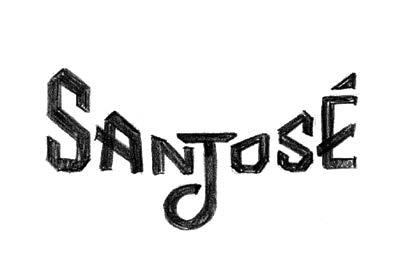
ATTRACTIVE (to your target market)
What makes a brand attractive to its tribe ultimately depends on the individual people within it. Understanding the lone customer is the first step in designing a look and architecting an experience for those people. Brand teams explore the dreams, challenges, aspirations, gaps, insecurities, and histories of their customers. These same principles must be explored whether the brand’s product is a microchip or a pita chip. Speaking directly to the tech hub of Silicon Valley, Watkins insightfully offers: “There’s no such thing as ‘low interest’ categories. Just ‘low interest’ brands. Everything has a story. Some of the biggest brands in the world sell meaningless objects, but they have poured substantial meaning into them.” The concept of meaning requires a mutual understanding between brand and customer. This understanding is only achieved through the customer being attracted to and experiencing the brand. That happens by design.
Watkins endorses “adding a level of unexpectedness by doing it, let’s say, 10 percent wrong. A few savvy brands do this well. That kind of experimentation and irreverence is exciting. When I see it, I love it,” he says with enthusiasm, delving into what brands can do to differentiate stylistically. Explore the unexpected and try it on for size and then, possibly, invert the entire thing. This is an idea the people of San Jose can get behind, as that 10 percent “wrongness” can often lead to much larger percentages of innovation. In the discipline and art of branding, differentiation is pivotal. By incorporating qualities divergent from tradition, even just by single digit percentage points, a brand is able to demand attention by igniting interest. Brand teams must strike this elusive balance between attracting their customer base and jolting expectations with the brand equivalent of a plot twist. Deft skill leveraging creative nuance married with solid tribal understanding is vital moving forward into the future, where we’re all hurtling at breakneck speed.
ADAPTIVE (to the changing times + placement)
Flexibility is key for creating a long-lasting brand. “For the San Jose identity, we pursued a mark that would feel at home in a skate shop as much as a tech conference,” Watkins explains. This speaks not only to the adaptivity required across demographics and interest groups, but also placement—the eventual homes for the brand’s presence: will the brand feel organic concurrently on a billboard, pop socket, and the CEO’s LinkedIn profile? When a brand is developed, it is created within the context of the present and the past precedent, with only a hypothesis for the future. The most timeless brands hypothesize correctly, designing a brand to withstand the changing societal demands and tribal cries for innovation and ingenuity.
On the subject of tribal demands, Watkins shares Native’s requirement for a brand’s coolness factor: “If it didn’t pass our T-shirt test, we were going back to the drawing board.” While perhaps not universally applicable, the T-shirt test indicates whether or not a brand is packing the coolness factor required by its tribe. For San Jose, the city residents needed to adopt the brand identity in a personal way—incorporating it into their personal identities through fashion. The Native Digital team internalized this truth, refusing to project an identity of San Jose natives from the outside. Rather, by revealing the brand in the form of T-shirts, stickers, and other swag,
“Our job is distillation more than creation. We start by listening.”
14 Sight & Sound 11.1
–Justin Watkins
The creative team focuses on three goals for designing the brand experience: the brand must be descriptive of its mission and products, attractive to the target customers— its tribe—and finally, adaptive for the future and the potential placements for their logo and visual identity.
people were able to experience and adopt the brand for themselves, before it ever became the forward-facing identity for their city. San Jose residents were afforded the opportunity to adopt the identity—to try it on for size, as it were—for themselves, personally. Was it the right fit? Is this how they experienced San Jose and how they idealized the future? For other brands, ways of connecting with their tribe will differ and even change over time. Designing revolutionary brands, cognizant of the eventuality of these shifts, demands creativity, because it flirts with the line between anticipating and engineering the future. While the gift of prophecy is not required, deductive reasoning skills and design chops in spades are recommended for aspiring brand builders.
SUMMATION
The voice and the visual identity of a brand are both descriptive of the brand and the essence of the brand itself. A brand extends beyond the color and font choices, graphic schemes, and wording of the company manifesto. Its tendrils of influence incorporate into the larger cultural landscape of the industry, and at times, beyond. Remarkable power is contained in a solitary brand when harnessed and channeled in line with its mission and in the direction of its goals. The challenge is in marrying knowledge, experience, intuition, creativity, and innovation together to create something new and different, but also attractive and ripe for adoption. A brand must deliver what the people want and need, in a way that challenges what they thought previously. This is both the challenge and the draw of the discipline. In this context, a brand’s currency is meaning. Using words, colors, typography, and images, meaning in branding is designed. When meaning is conveyed without error in transmission, to then affect the way a member of the target market behaves, feels, or thinks about themselves, the ultimate brand goal is realized. To affect change we brand. C
15
Written by Kevin Marks
Photography by Daniel Garcia Tangible UX, LLC tangible-ux.com
Silicon Valley is rightly and consistently praised for its talent, innovation, rigor, and work-first culture. Even on weekends the Bay Area workforce is out en masse—paddleboarding and mountain biking, marathoning and cross-fitting, ringing the sweat from the spirit of advancement and achievement even in their recreation. One of the only things Silicon Valley doesn’t excel at, perhaps, is living a balanced life.
Not so for James Young—veteran designer, entrepreneur, and longtime resident of the Santa Cruz Mountains. He is a rare animal in the Valley, working and living half the week in San Francisco, the other half in Ben Lomond—a city of a few thousand people cuddled around Highway 9, near Big Basin Redwoods State Park. “In the mountains I can let my hair down and be who I am,” says
James. “I can be a little bit more free spirited.”
James is no stranger to the valley/mountain dialectic. He grew up in San Jose—until his family moved to Scotts Valley—just as disco was dying out and skate and surf culture were taking hold in Northern California. He studied design at San Jose State and landed a dream job at Adobe right out of college. He initially designed type specimen books and eventually helped Adobe design and maintain its first website.
James has had a toehold in the redwoods for years now, raising his family in Ben Lomond and the Santa Cruz area. Now, from his San Francisco office in Potrero Hill, he and his company, Tangible UX, help high-tech companies design their products and solutions with human beings in mind. It may be the balanced life he leads that enables him and his
staff to keep the flesh-and-bones elements of tech first and foremost in their work. Even James has rigorous personal work boundaries—a foreign concept in the land of the 70-hour workweek. “I don’t like working weekends,” he says, seemingly grasping the unusual nature of that declaration uttered in the Silicon Valley context. “I get depressed. I think it’s bad for creativity. I don’t like working evenings. I hold those times dear.”
To live comfortably in the town and the city, one must shapeshift, if only a little. James presents as more of a businessperson in the city and more Santa Cruz County when he’s up the hill. The live/work city loft space he and Tangible UX share a few blocks from the Bay is tidy, organized, and modern. His Ben Lomond home is warm and lived in, in a charming artsand-crafts kind of way, and his cozy one-room detached work
James Young’s mission is to remind Silicon Valley that the “user” in “user experience” is actually a living, breathing person with distinct needs.
1230 22nd Street San
94107 16 Sight & Sound 11.1
TANGIBLE
Francisco, CA
UX DESIGN

17
James Young


18 Sight & Sound 11.1
shack behind his house encourages not just business and creative thinking, but also serves as a sunny lounging parlor for Benny and Bella, the family’s pair of Chihuahuas. Whether in the mountains or the city, both places feel like home.
“I live in Ben Lomond and San Francisco, and being in the city does help me get into the zone of what Silicon Valley is. It helps me get more in touch with where my clients are and be more responsive in some ways, because I have that mindset of the technology and creativity.” A sense of balance also informs the design approach for James—a disciple and devotee of design thinking and the idea that behind every product and click is a human being. His mission is to remind Silicon Valley that the “user” in “user experience” is actually a living, breathing person with distinct needs for their technology, and that human moment of ex-
change should drive everything Silicon Valley does.
“Design is everything. It’s an overall experience. For a company to be truly successful, everybody needs to be trained in customer-focused design,” James says. “Design is not just the domain of a few people. You cannot actually survive and thrive today if you’re not designing for your customer—you will fail.”
James teaches design thinking methods and practices at Stanford and California College of the Arts and regularly trains some of the most successful companies in the world on how to develop deep customer empathy and radically straightforward design experiences. Companies like Apple, Intuit, Netflix, Verizon, and Yahoo! are all clients of Tangible UX and are buying in.
If a balanced life is good for business, then for James Young, business is booming. C

19
Lailani Africa Chi Creative

20 Sight & Sound 11.1
Written by Michelle Runde
Photography by Daniel Garcia Chi Creative Agency chicreativeagency.com Instagram chicreativeagency lailaniafrica
For any artist or creative who needs help telling their story and building their brand, meet Chi Creative, an up-and-coming social media marketing agency based in the South Bay. Founder Lailani Africa, a Sunnyvale native, has come far in turning her social media savvy and talent for bringing other people’s stories to life online into a business.
When did you first get the idea to start a creative agency? I was always following my curiosity to make things, like videos or creating music. It was always a part of me, but I never thought I could take it anywhere. I didn’t think I could start my own business, because there’d be so much to do, and I never believed in myself. But about six months ago, I started working with a coach, Anthony Campo from Battle Ready Business. He was my manager at the time, so he took me under his wing. I had a contract with Eastridge, helping with social media, and doing their influencer work, as well as their marketing videos.
At the time, I wasn’t taking the steps to start a business and thought I didn’t know if I really wanted to do it because I was scared. But finally I just said, ‘Okay, let’s do this!’ and I took the initiative. We started some coaching sessions and goal setting, and I came from ‘I don’t see this going anywhere’ to ‘Wow, I’m actually doing this!’ just six months later.
Was Chi your first project like this? I was always into social media and creating content. I started with a blog call The Coffee House Invite, which is actually what Chi stands for. At the time, I wasn’t really doing song writing as much as I wanted to, but I still needed that creative outlet. So I thought, why not try creating a blog for local artists and local businesses and to get to know their story? I felt like that’s the most important thing we can do, connecting through stories and learning about what local artists and businesses do and how they grow their passions through various art forms, like I’m doing now [with Chi].
What type of people and businesses does Chi work with? Usually the clients that I work for are people who are involved in the community. Right now, it’s pretty local, but I’m open to working in different areas. I just tend to go towards San Jose because I’m always in San Jose for my day job, so I’m always meeting different artists and creatives here. It’s just a really unique community in San Jose. Most of the time I work with people I find randomly, like meeting up with someone in a coffee shop.
So it’s very organic? Absolutely! Like today, I met a Lyft driver who’s partnering with a local nonprofit that helps high school students get into journalism and to cover sports, and I had no idea that even existed. There are these opportunities you see when you run into people, and that’s what I love about it. Just being yourself and sharing your story with others, I think that’s the best way for me to find clients.
What type of services do you offer clients? I do a lot of event coverage, which is where I first started. I really try to highlight what’s going on in San Jose. My first project was Eastridge Center, and that’s what really started me thinking about how I could do this full time. For Eastridge, we created multiple videos featuring events and retailers, so they can use it on their social media. Then I also promote them on my own Instagram account to show what’s going on, basically influencer marketing.
What’s next for Chi? I know that I want to do more Instagram management of other businesses’ accounts, making videos, photography, and bringing in influencers. For me, I know my mission as Chi is to build a community online, and also in real life. I feel like our relationships in real life are so important, and I want to really get to know the people that I work with and tell their stories. C
Starting from a blog in high school, young entrepreneur Lailani Africa has transformed her passion for social media into a burgeoning creative agency.
21

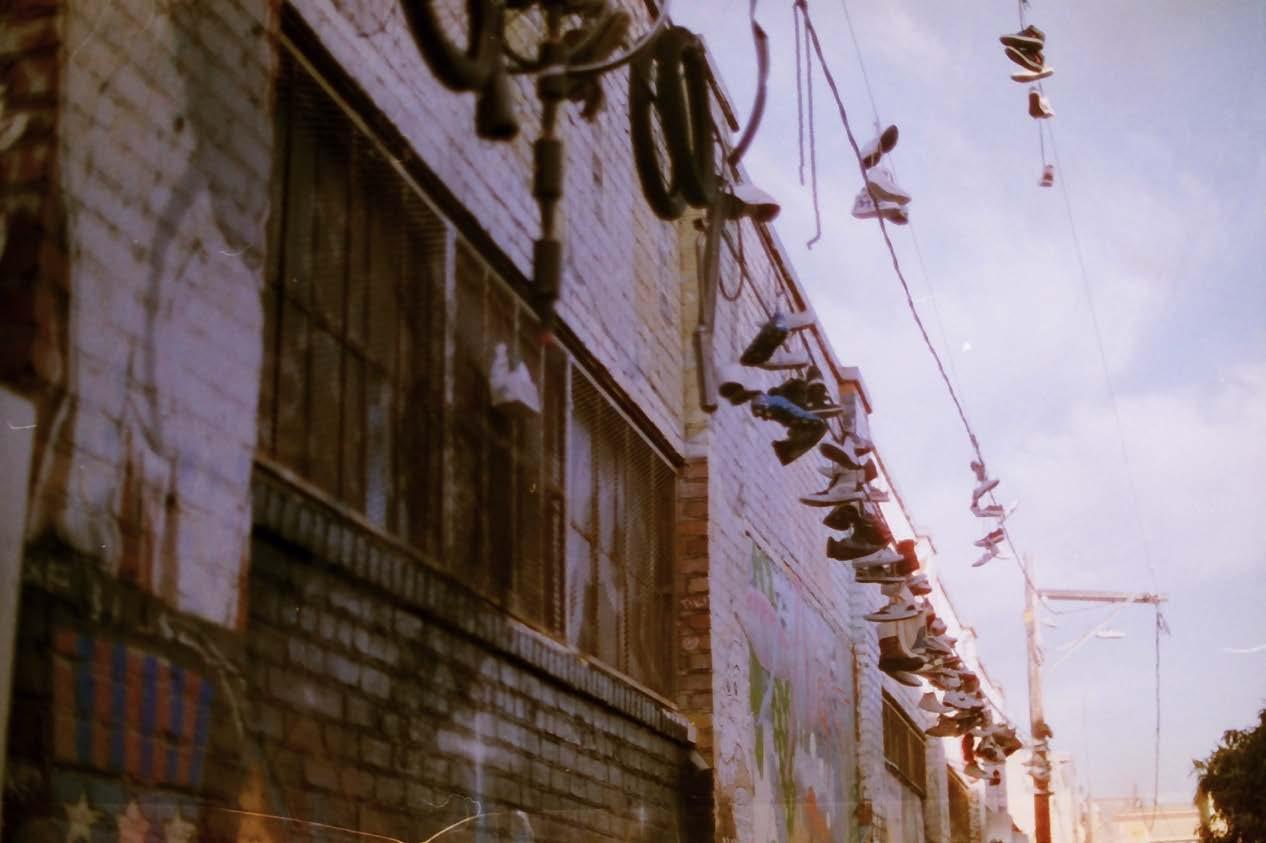



CAFE SANTA CLARA
. 8 . 1 9 6 P M - 8 P M 22 Sight & Sound 11.1
CHROMATIC
2

“I feel like our relationships in real life are so important, and I want to really get to know the people that I work with and tell their stories.”
23
–Lailani Africa

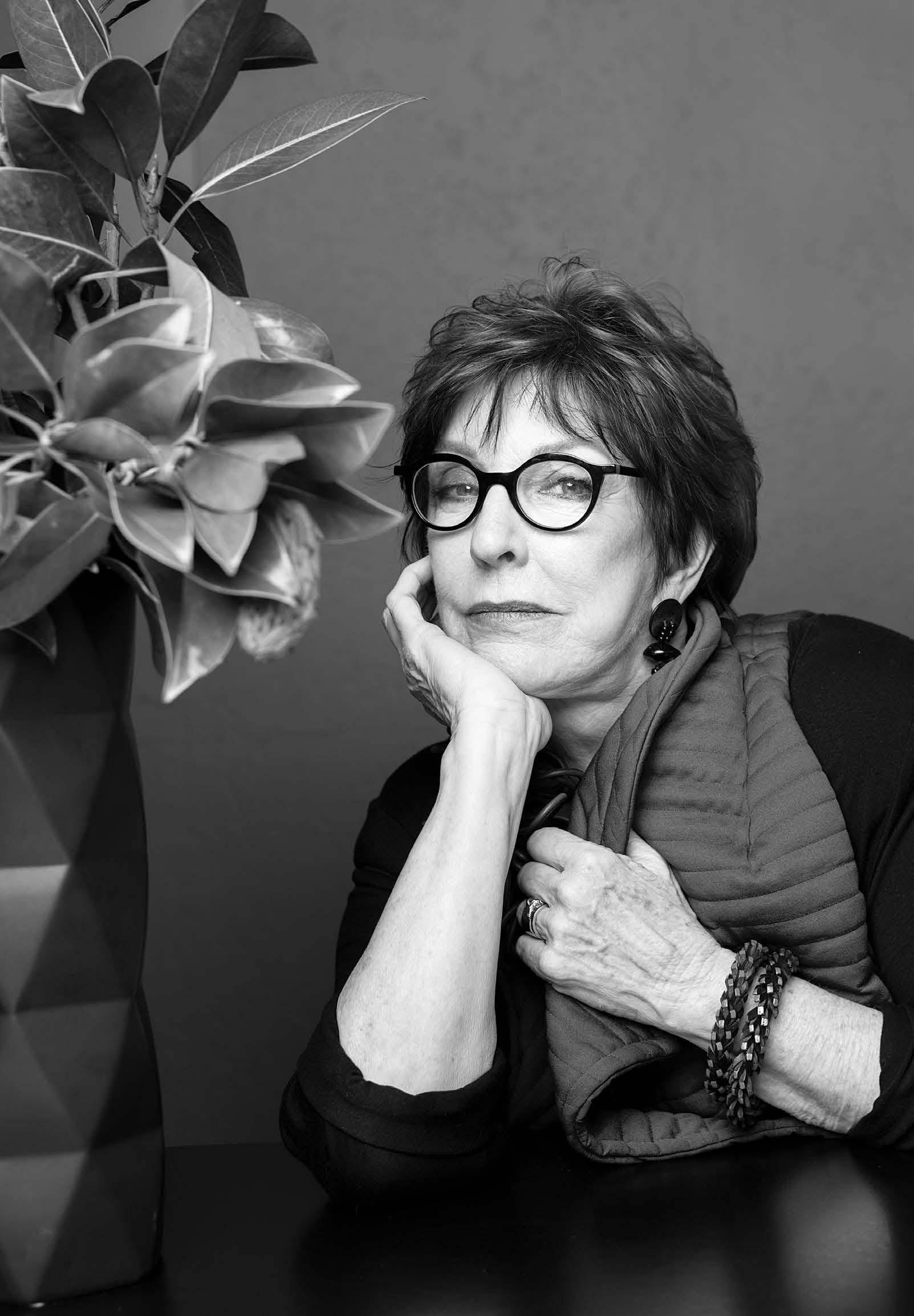 Written by Cathleen Miller
Photography by Daniel Garcia Pamela Pennington Studios pamelapenningtonstudios.com Social Media
Written by Cathleen Miller
Photography by Daniel Garcia Pamela Pennington Studios pamelapenningtonstudios.com Social Media
PAMELA PENNINGTON
Becoming a Modernist
When 17-year-old Pamela Gaynor arrived in San Jose, she wore a girdle, hat, and gloves to sorority rush interviews. The year was 1960, and a sudden heat wave had Miss Gaynor sweating from the wool dress her mother purchased in LA for San Jose’s northern climate, exacerbated by the intense scrutiny she was receiving to determine whether she was worthy to join the Greeks’ elite ranks. She was chosen as a Delta Gamma, because, as Pamela theorized, “I looked like a DG girl. Back then, I was blonde and blue eyed— and all DGs were blonde and blue eyed.”
Through a circuitous path that included career changes, ping-ponging between SoCal and NorCal, a transatlantic hop, a failed marriage, and resurrecting herself like only a true phoenix can, Pamela would later become a redhead and one of the Bay Area’s most respected interior designers.
Pamela grew up in Los Angeles, and, because she was a
surfer, earned the nickname Gidget. Her mother attended UCLA for a year but had to drop out of school to help support the family during the Great Depression. Though she was devastated, she held on to the dream that her daughter would later have the opportunity that she had lost. So, she encouraged Pamela to attend college, and it was decided that she would head north to San Jose State, enrolling in the art department. When she arrived, the faculty reviewed a list of potential careers for their graduates, one being interior design. The young Miss Gaynor, who had been decorating her room since she was five, thought, “This is it.” She went on to learn how to render architectural drawings in watercolor with twopoint perspective and studied an abundance of design and color theory.
After graduation, Pamela returned to Southern California but found that brief stints in her chosen field were disillusioning, so she began searching
for a new career. Dabbling in the primary options for women in the 1960s, Pamela became a secretary—at which she was a disaster—before returning to school for her teaching credential in art. Pamela laughs at this last experiment: “Here I was with my Sassoon haircut, my miniskirts, my fishnet stockings, and enormous watch—totally different from all the other women in my program.” So when she received a phone call from a local interior designer saying she needed help, that was the end of Pam’s teaching career.
However, this chapter ended when a girlfriend—in hot pursuit of a Stanford doctor she’d fallen for—convinced Pamela to move to Palo Alto with her. When Pamela arrived back in NorCal, she accompanied her friend to buy a sofa at a store called House of Today. The design fanatic had never seen anything like the modernist aesthetic displayed. Again, the little voice said, “This is it.” She went home, changed her
25
pamelapenningtonstudios
clothes, and came back to apply for a job.
She was becoming inculcated in the oeuvre of House of Today, whose clients owned Eichlers Homes, when one day, a British architecture student walked in wearing a neck kerchief and pink corduroy trousers. This was Richard Pennington, and he was looking for a job. Like a scene from a romcom, Pamela invited Richard and his two British mates home for dinner with herself and her two female roommates. The California girls watched in amusement as their guests tried to eat tacos with a knife and fork.
Within eight weeks, Pamela had sold her car and used the proceeds to purchase a plane ticket to accompany Richard back to the UK. The year was 1969, and England was in the vanguard of design. The LA
girl lived with Richard and four other male architecture students in a house with no heat. This was a far cry from California Dreamin’, but they mentored her on their modernist aesthetic—lessons that would last a lifetime.
The former Gidget would go on to marry Richard and change her name to Pamela Pennington, one half of a powerhouse design firm founded in Palo Alto in 1973. The duo later joined a design collective that took over the old Roos Brothers on University Avenue, revitalizing a building that had been boarded up for 14 years. Utilizing a 600-square-foot corner of the storefront, the husband and wife founded a new business dubbed The Minimal Space. At first business was slow, but they managed the shop while they continued with their private in-
terior design consultancy.

After hours, the couple headed to the pub next door, a British expat hangout named Rudy’s, after Rudyard Kipling. When the owner asked them to help him redecorate, while sheepishly admitting he only had a budget of $800, Pamela realized they’d have to do it primarily with paint. Thus was born “Rudy’s Red,” with which they coated every surface in the place. “People felt enveloped by this color,” Pamela noted. “It was womb-like.”
As their clientele grew, the couple decided to move The Minimal Space from its 600-square-foot location to a 6,000-square-foot . storefront at the corner of University and High. Herb Caen quipped in the SF Chronicle: “I guess the space isn’t so minimal any more.” This was the early ’80s, and the es-

26 Sight & Sound 11.1
tablishment became known for its unique offerings. With selected pieces from their annual sojourn to the Milan Furniture Fair, the Penningtons became the first place in the Bay Area to showcase modern Italian furniture. Regular customers included Steve Jobs—another fan of minimalism. The team also became known for the lavish parties they threw.
But this thriving partnership ended when Richard and Pamela went the way of Sonny and Cher, Ike and Tina, and Donald and Ivana. Richard wound up with The Minimal Space, and his ex-wife launched Pamela Pennington Studios from the base of their former design business.
Today Pennington Studios is a full-service interior design firm with custom cabinetry and lighting, and Pamela says


her aesthetic has morphed into “warm modern.” Now when you enter her studio in Palo Alto, one of the first things you notice is the wall covered in awards from the American Society of Interior Designers. The firm’s portfolio includes the homes of Silicon Valley’s propertied class and even some nightclubs in San Francisco. Their projects are frequently featured on the insanely popular website Houzz and in the print magazine Luxe.
To those eager to build their dream house, Pamela offers this advice: first hire Pamela (of course) then, hire, a good architect. Plan to spend a year designing your house—otherwise, plan to do it twice. Lastly, you must make firm decisions, because constantly changing your mind leads to confused design and major cost overruns.
And how about Pamela Pen-
nington’s own home? Where does she live? Funny you should ask. One day while driving to San Jose to look at lofts, she made a wrong turn onto San Carlos and wound up in Naglee Park. “It was like Brigadoon,” she reflected on the discovery, “going back in time to old Palo Alto professorville.” Coincidentally, Pamela drove past a home at 14th and Williams that was for sale. “This house just spoke to me,” she said. She put an offer on it immediately, and today, the devout modernist lives in a 1925 Spanish Revival bungalow with her husband, poet Alan Soldofsky.
It was only after she’d moved in that Pamela realized that where she’d lived in 1960 was just down the street—the place where she’d arrived decades before, wearing her girdle, hat, and gloves. C
27
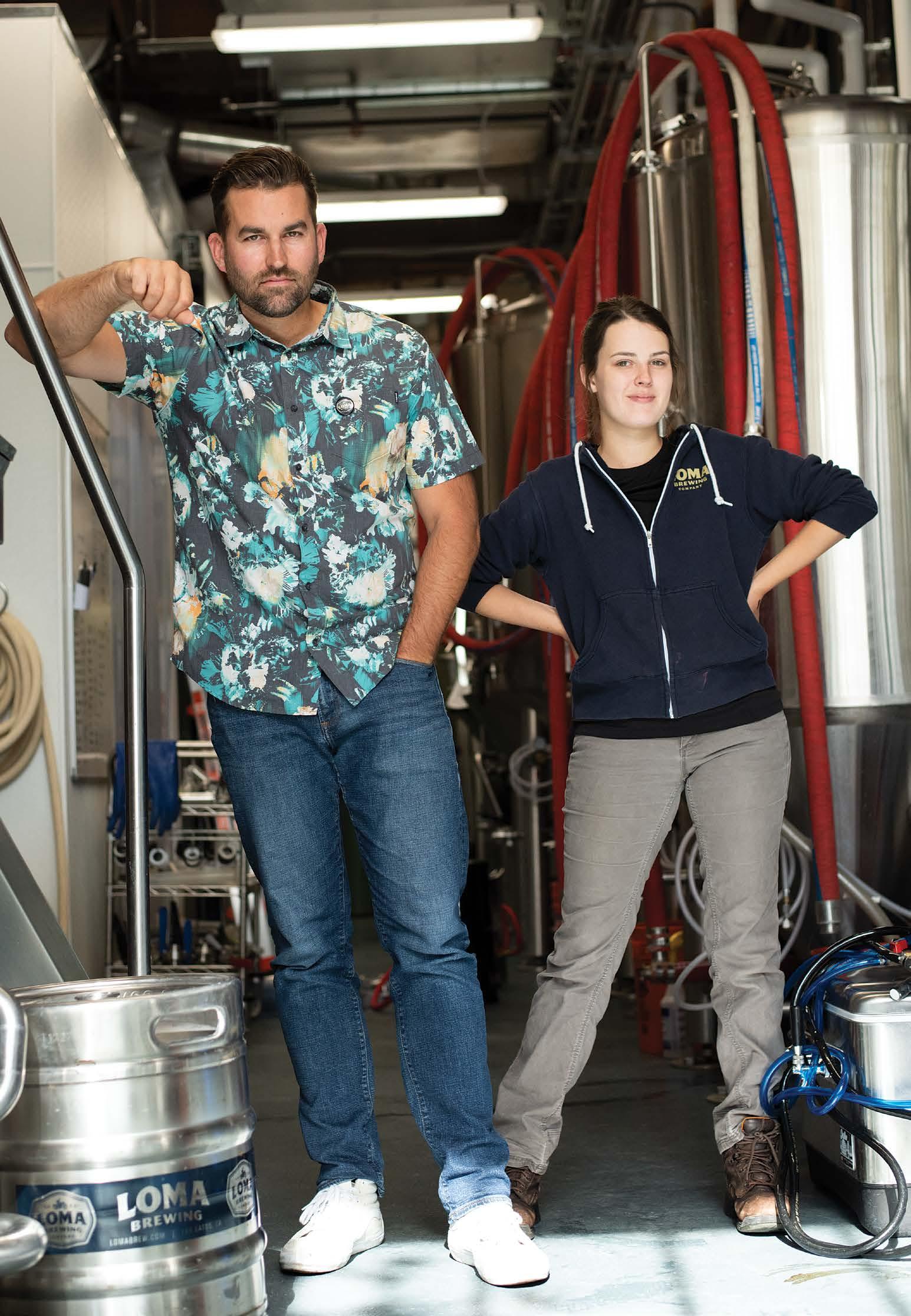 General Manager Dan Reineke
General Manager Dan Reineke
28 Sight & Sound 11.1
Head Brewer Brogan Hunter
Written by Nathan Zanon
Loma Brewing Company
Kevin Youkilis, a former Major League Baseball all-star who won two World Series with the Boston Red Sox, has made a career out of being something of an underdog. A key figure in the bestselling book Moneyball by Michael Lewis, Youkilis was lightly regarded coming out of college in 2001. His stock was low, mainly due to his physical appearance, but the league was transitioning to a new era of data-driven player values, and his were off the charts. Teams that were tuned in to the new approach gave him a chance to find success in the big leagues. In turn, a decade in the majors helped him find out about great beer.
“[Baseball] allowed me to travel around the country. I got to sample a lot of different styles of craft beer, go to breweries, just become more educated,” Youkilis recalls. “I always made it a point to try new craft beer wherever I went. Some guys on my teams would look at me like I’m weird because they were so into their domestic beers.”
As his baseball career wound down, Youkilis and his wife decided to settle in the Bay Area, where she had grown up. He and his brother Scott, already a successful restaurateur, began kicking around the idea of starting a brewpub together. Kevin reached out to his longtime friend and former college teammate Dan Reineke, who had been working in the food and bev-
erage industry in New York, for advice on finding a restaurant manager. “About 24 hours later, he emailed me saying he wanted to come out here and do it,” says Youkilis.
“It wasn’t hard to twist my arm to get out to California,” Reineke adds. “It’s beautiful.”
The brothers acquired the defunct Los Gatos Brewery, which had closed rather suddenly after having been open for about 20 years as a staple in the city’s small downtown. Youkilis wanted to freshen up the place by renovating the interior, overhauling the menu, and focusing a lot more on the beer. When the new Loma Brewing opened in August of 2016, some longtime customers resisted the changes.
“Some people hated what we did with the place, some people really loved what we did,” he says. “Getting over that hurdle took a good six months to a year. Now people finally have come around and really enjoy it. Our focus is truly on trying to make really good craft beer—to be one of the best in the South Bay and try to compete around the Bay Area with really good recipes.”
In just two years, four of their beers have placed in the California State Fair’s Commercial Craft Beer competition, and while they have focused on a lot of traditional styles, more unique flavors are on the horizon as brewmaster Brogan Hunter is being let loose to experiment.
“She’s been amazing for us,” Youkilis says
Loma
130 North Santa
Social Media lomabrew 29
Photography by Daniel Garcia
Brewing Company
Cruz Avenue Los Gatos, CA 95030 lomabrew.com



30 Sight & Sound 11.1
of Hunter. “Part of her DNA is to get better and better, so we’re excited to see her grow. The bottom line in this industry right now is if you don’t have new and creative stuff, you’re going to lose the demographic that you need to grow your business.”
Hunter is joined by Executive Chef Aubree Arndt for an all-female culinary leadership team. Arndt’s menu attempts to sew together traditional pub fare with a diversity of flavors that represent the Bay Area clientele: bratwurst, wings, and flatbreads are joined by Korean style pork belly and kimchi nachos and pan-seared octopus, to name just a few. The result seems high-end for a brewpub, but perfectly suited for the upscale Los Gatos crowd.
“Aubree makes really great food,” Reineke says. “People coming here are surprised by how progressive the menu is, [not just] a bunch of stuff that’s dumped in the fryer. She keeps it creative. Our food is very Pinterest and Instagram friendly.”
In addition to great beer and food, the team recently added a coffee shop to a side room that had been previously reserved for private events. A coffee snob in addition to being a craft beer connoisseur, Youkilis found a roaster in Portland and is confident that Loma Coffee can be a leader among local coffee roasters in terms of quality and taste.
Ultimately, the goal is to make Loma a family destination and a community hangout spot. “We want this place to be where everyone comes in and comes together. Start off on a good note by getting the caffeine in them…and then at night, when they’ve had a crazy day and need something to bail them out, have a nice craft beer. It’s pretty perfect.”
Tucked away on a Los Gatos side street, Youkilis and Loma Brewing Company may be regarded as an underdog yet again. But with beer, food, coffee, and a vibe that stand out, people are noticing. Much like in Moneyball, the best will rise to the top. C

31

32 Sight & Sound 11.1
General Manager Mike Lerman
Written by Johanna Hickle
Photography by Daniel Garcia
AC HOTEL
Before the AC Hotel in Sunnyvale reached final fruition in early 2019, most people stepping onto its construction site might not have seen beyond the power tools, ladders, and work benches. But general manager Mike Lerman strode across the same space and envisioned the polished lobby it now houses. To Lerman, the naked cement floors traversed by bright orange extension cords, were already robed in carpet; the walls, barren save for a sparse coat of primer, were already swathed in paint and adorned in tasteful art. Through his eyes, the space was expectant, patiently undergoing growing pains as it prepared for guests to grace its lobby.
“As you enter the building, there’s a beautiful white marble front desk that’s a simple statement piece (open so that the team can move around and engage visitors in the lobby),” Lerman described, long before the décor actually manifested. “There’s a custom piece of artwork behind the front desk that’s representing cherry branches under this beautiful gold metal.”
But what steps were taken to transform what was once the husk of a building into its present state as a welcoming and warm home away from home? Expectation and preparation are fundamental for a hotel to effectively fulfill the role of hospitable host. Lerman and the third-party hospitality management company he works for, Evolution Hospitality, strive to foresee the needs of visitors before it becomes necessary for them to ask. During construction, before the garage accommodated guests’ cars, it was temporarily converted into a storage space brimming with pallets of bedding, security safes, coffeemakers, and hundreds of other tiny little details to surpass guests’ expectations.
Staffing the hotel is another aspect of preparation handled by Lerman. “My main function [before the opening] is to find, recruit, hire, and develop really great people from as close to the project as possible so they really understand the area and the culture and that great context here,” he says.
As the point of entry into a new environment for travelers, a hotel must welcome visitors to an area and act as a kind of ambassador. Hotel chains of the past may have been much more cut-anddried, but the hotel of the future is tailored to its surroundings.
Social Media achotels
AC Hotel Sunnyvale Cupertino 597 East El Camino Real Sunnyvale, California 94087 achotels.marriott.com
Hotel chains of the past may have been much more cut-and-dried, but the hotel of the future is tailored to its surroundings.
33


34 Sight & Sound 11.1
Lerman explains that the décor of this AC Hotel location is implicitly Bay Area–based. “The design of the public spaces is based on the origins of Sunnyvale and the cherry orchards that lined the valley,” he describes. “So the color scheme is reminiscent of the morning fog rolling through the branches, the cherry blossoms, the light soft colors.”
After opening, hospitality shifts from preparation to an intentional attentiveness to guests’ needs. Lerman switched focus to securing stability, opening and closing the house every day, ensuring clear communication amongst staff, and supporting the team. He adds, “We [create] a plan, [watch to] see if it works—and then we want to keep improving it so that we stay relevant.”
Lastly, authentic hospitality must be relational. “I actually think the more successful we are at home, the better work goes,” he notes. “I can bring my home life here, and we can talk about personal stuff.” Evolution Hospitality is of the same opinion—an authenticity that drew Lerman. “Our company is really good about saying, ‘Don’t check it at the door. You bring your humanness into the building.’ ” Employees are free to share the highs and lows of their lives. “We’ll work on that with you, and let’s go out and take care of people.”
Lerman notes that the act of humanizing is also a valuable reminder for guests. When a visitor approaches an employee with a problem and remembers that “there is a human on the other side of each interaction,” it allows that staff member to be much more creative and adequate in generating solutions. “The gentler you can come into that interaction, the more we want to serve you,” Lerman says. “It puts people naturally into fight or flight when we’re confronted or pinned to a wall in an interaction, and it makes it really hard to make a smart decision.” And really, what hardworking host isn’t motivated to deeper dedication by a little affirmation? C
“OUR COMPANY IS REALLY GOOD ABOUT SAYING, ‘DON’T CHECK IT AT THE DOOR. YOU BRING YOUR HUMANNESS INTO THE BUILDING.’ ”
35
-Mike Lerman
Written by Nathan Zanon
San Jose Spotlight sanjosespotlight.com Facebook spotlightsj Twitter & Instagram sjspotlight
J S San Spotlight Jose 36 Sight & Sound 11.1
Photography by Daniel Garcia
S
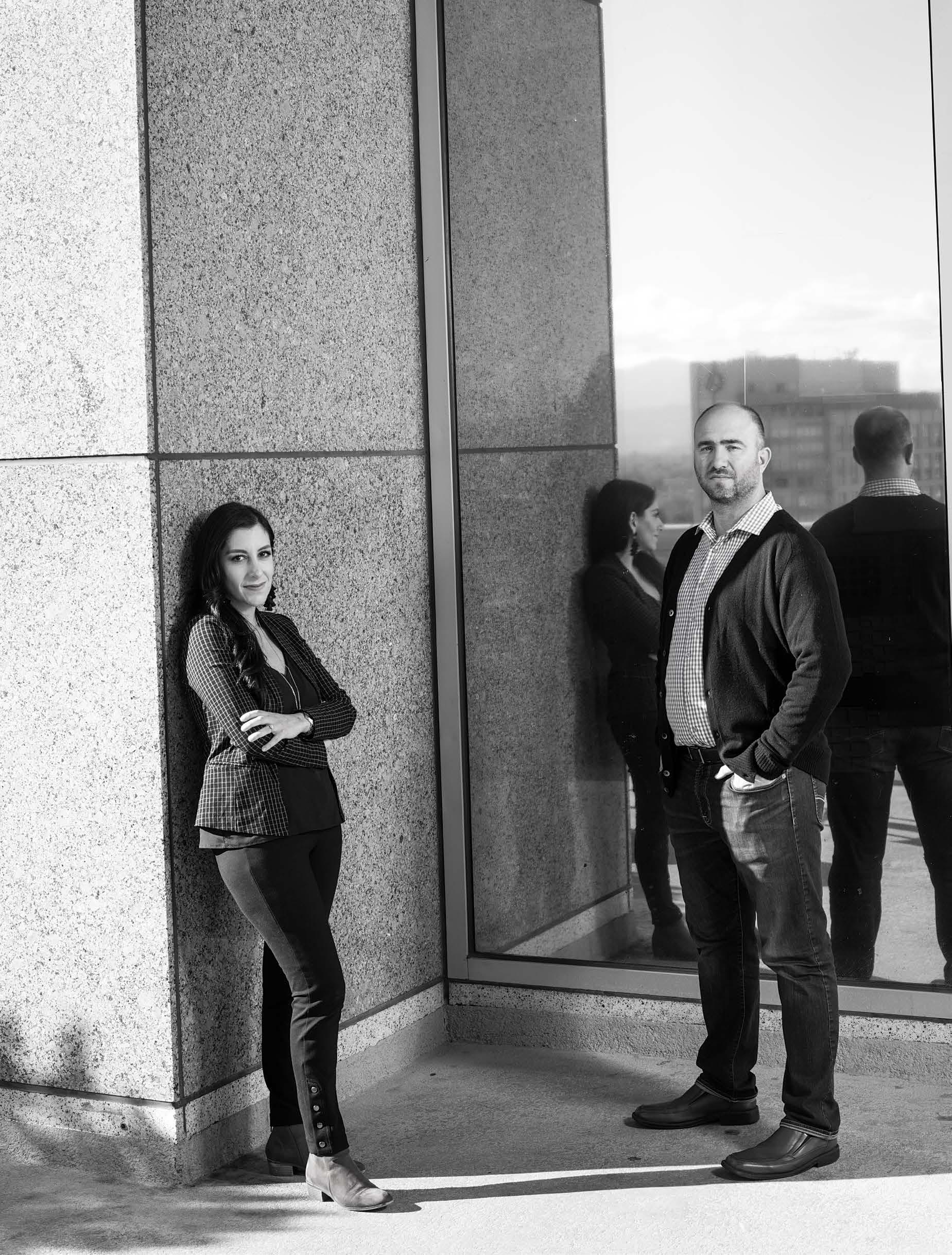 Ramona Giwargis
Ramona Giwargis
37
Josh Barousse
AAs the 10th-largest city in the United States, San Jose’s local news offerings are startlingly sparse. The Mercury News has reduced its staff reporters in recent years, even while buying out many of the surrounding community newspapers. Metro fills some of the holes in San Jose coverage, but as a free weekly, its scope is limited. Online publications like Patch have struggled with readership, and TV news outlets spread their resources across the entire Bay Area. All of this leaves Silicon Valley residents with few opportunities to read about local politics, community issues, and other important news affecting their lives.
“It’s a news desert,” says Josh Barousse, who, with his wife, journalist Ramona Giwargis, launched a new, independent, online news outlet called San Jose Spotlight in January. Spotlight is based on a nonprofit model, with the goal of addressing the dearth of news in the South Bay by delivering “an alternate source for high-quality, reliable, and truthful news.”
“It’s a new model in San Jose, but nation-
Jose] is a news desert.”
ally, it’s a growing model,” says Barousse. This approach has seen success in cities and regions across the country, including San Francisco, Denver, and Vermont, but also has national support through news outlets like Mother Jones and the Center for Investigative Reporting. “It’s the fastest-growing news model—it’s the fastest-growing field in journalism,” Giwargis says. “There are, at this point, close to 200 nonprofit news organizations across the country.”
San Jose Spotlight will be a digital-only publication, with a completely free website, no paywall and no pop-up advertising. Funding will come from individual memberships, business partnerships, foundation grants, and special quarterly paid events that will feature educational opportunities, panel discussions, and community engagement. “For years, newspapers have relied on advertising to sustain themselves, but I personally feel that model is no longer working,” Giwargis explains. “People just aren’t buying print ads anymore; newspapers are reducing the size of the paper and the coverage, and yet they expect to be able to con-
tinue selling ads.” She also adds, “Looking to other [nonprofit publications] that have cut out ads and are relying just on those revenue streams we’ve mentioned—they’ve been able to make it work.”
Just as is the case with other nonprofits, fundraising will need to be a focus, and the goal is for Spotlight to receive most of its funding from individual donors so that they don’t need to rely on large grants that can disappear unexpectedly. Barousse, who will manage the development and operational elements of the organization, sees this as key to long-term sustainability. Memberships to the site will be similar to a donation to a public television station or to your favorite podcast network, with levels ranging from five dollars to $200 per month.
The Spotlight duo met when Giwargis was covering the 2016 City Council races, in which Barousse had an unsuccessful bid for the District 8 seat. Both of them grew up in San Jose and went to school locally, and they made a good connection. After Barousse moved on from policy work at City Hall to doing advocacy for Silicon Valley at

“[San
-Josh Barousse
Home, they kept in touch, and a relationship blossomed. “It’s a winning combination,” Barousse points out, referring to both their personal and professional partnership. “Her journalism background and my development background can really make [San Jose Spotlight] successful long-term.”
Giwargis brings with her more than 10 years of experience in journalism, much of it working the city hall beat for The Mercury News. But when she lost her job in December of 2017, a new opportunity came up quickly at the Las Vegas Review-Journal, so she and Barousse put a pin in their San Jose roots and made the move. Her new position was covering politics and government, including the recent, highly-contentious US Senate campaign. “It was one of the most closely watched senate races in the nation,” she explains. “It was a great experience.”

While living in Nevada for just over a year, the couple discovered a newspaper called The Nevada Independent. “It’s a nonprofit model and they’re doing incredible work,” Giwargis says. “I was curious to see if
we could do something similar in San Jose; we had been talking about it for years, and this was the first time it kind of clicked for me that the nonprofit news model might be the way to do it,” she adds. “I came home from work one day and told Josh, ‘I want us to do this for our hometown, in San Jose.’ We felt like if this model could be successful in Nevada, why not in Silicon Valley, the heart of innovation?”
Their move to Vegas always felt temporary, and they have kept close ties to friends and networks back in San Jose for the past year they have been away. “People who realize that through my years at The Mercury News I was always fair, continue to come to me with stories,” Giwargis says. “Even when I was in Nevada, I would often get text messages and phone calls from sources back in San Jose saying, ‘This is happening; no one’s writing about this’ or ‘Wish you were here. You could cover this.’ So we still have those relationships.” Barousse and Giwargis are tapping into a network of journalists known in the community, who have covered the
South Bay, who have sources, and have built relationships. “Josh is very respected and very well known as a man of high integrity who’s built a lot of relationships in the community—and I have, too,” Giwargis says.
Making the move back to San Jose to create San Jose Spotlight has been an exciting one. When the full site launched, it already had well over 100 members signed up, along with grant money and support from some prominent local leaders who are eager to see what a new news source can bring to the community. Success, the two founders agree, would be to create something reliable and sustainable that is community driven and community supported.
“This is a movement. This is a new day for San Jose,” says Giwargis. “This is an opportunity to do things completely differently than we’ve done in the past.”
For a city that has been fasting in a desert for years, San Jose Spotlight might be just the thing to quench the community’s thirst for news.
C
“If this model could be successful in Nevada, why not in Silicon Valley, the heart of innovation?”
39
-Ramona Giwargis
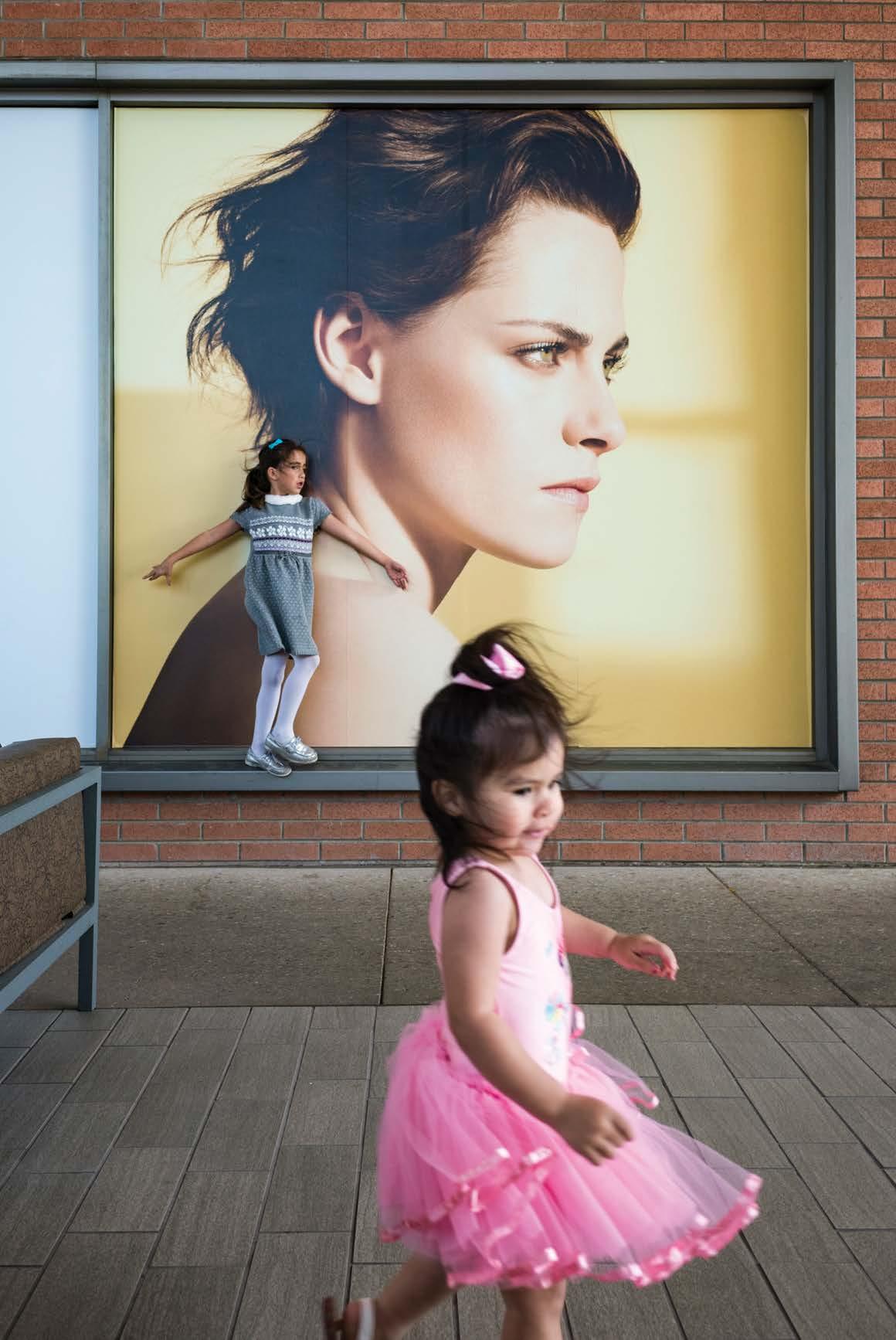
DAN FENSTERMACHER: DEVELOPING AN IMAGE
Written by Johanna Hickle Portrait Photography by Daniel Garcia Fine Art danfenstermacher.net
Breathing life into a picture takes vulnerability. It’s an act in which the photographer lends the viewer his eyes and says, “Really look at this. Here is something to be seen.” Through his use of camera angles, focus, color settings, and light exposure, we catch a glimpse of what the photographer values, what he or she believes. A good picture reaches us on a soul level—then triggers a response.
“Humans are visual beings, and when something as real as a photograph is presented to us, it can touch us in unexpected ways,” says Dan Fenstermacher, who works as a documentary and street photographer as well as a photography instructor at West Valley College. “Reading about the atrocities of war or the effects of a natural disaster don’t evoke as much empathy as a powerful photograph, in my opinion.”
With a knack for capturing strong emotion through the gestures and expressions in his candid shots, Dan says he “aims to shed light on the perseverance of the human spirit in overcoming life’s challenges.” To see this in action, look no further than his Perceptions of Identity series. Through these visceral images, Dan introduces viewers to individuals combating mental illness. The project, which was featured in Huffington Post, seeks to “humanize misconceived perceptions by fostering dialogue and giving voices to a misunderstood and misrepresented community.”
His depictions of obsessive-compulsive disorder are among the most striking—perhaps because he himself strives to keep the condition in check. In one image, a man pours Windex into a coffee mug while a small army of Lysol spray, Clorox wipes, and Dawn dish-
Instagram danfenstermacher 41
Commercial danfenstermacher.com


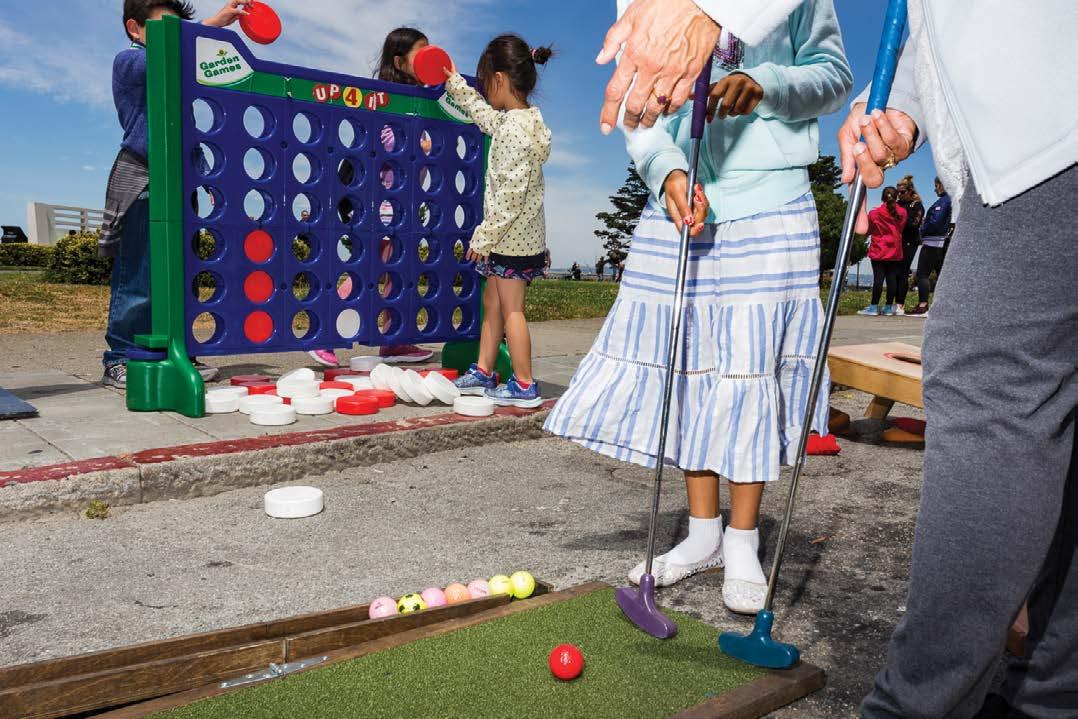
42 Sight & Sound 11.1

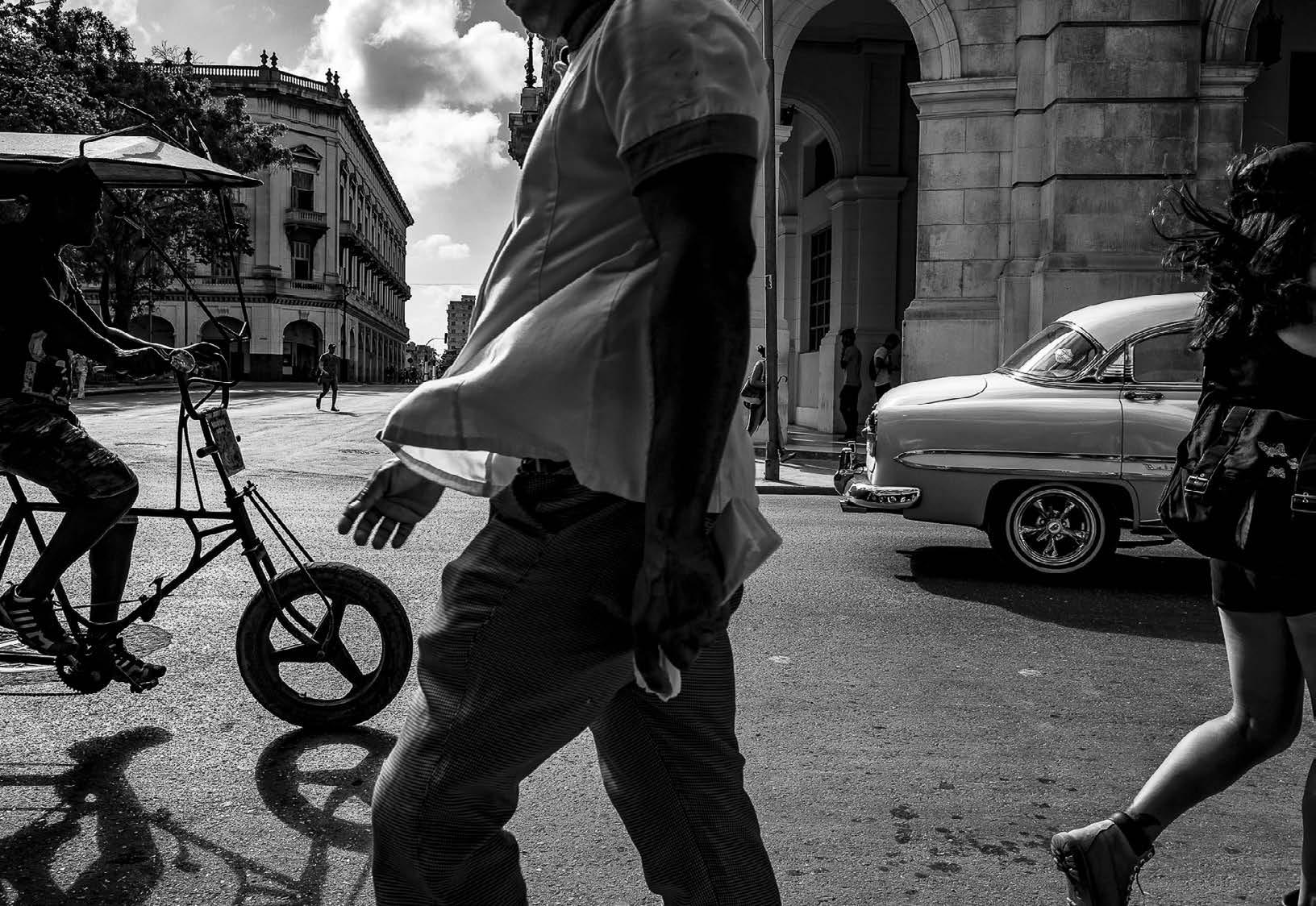


44 Sight & Sound 11.1


45
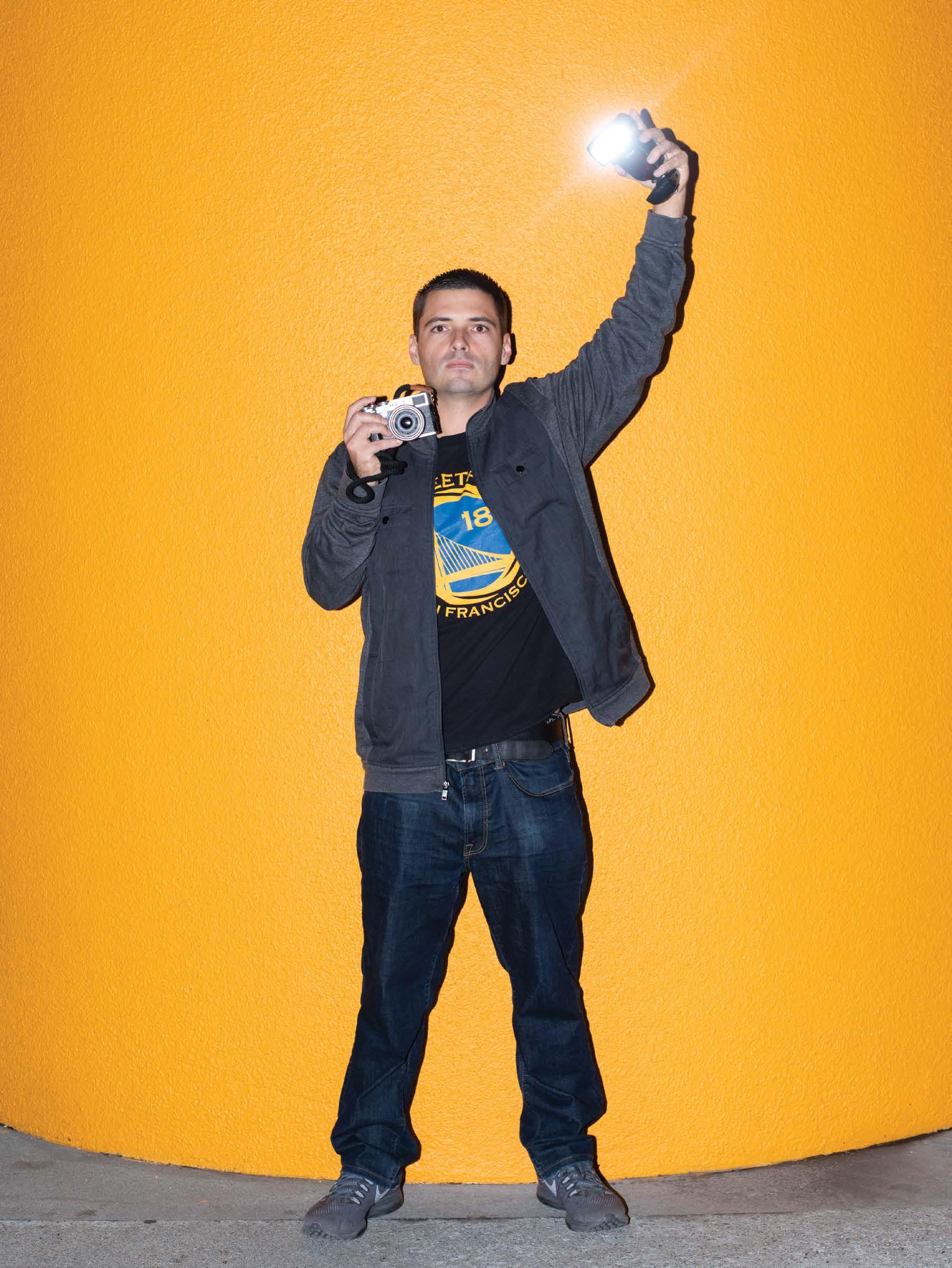 Dan Fenstermacher
Dan Fenstermacher
washer soap bottles crowd his coffee table. In another, a woman wearily washes up, seven bottles of hand sanitizer lining her Saran-wrapped sink counter—their nozzles swiveled (almost accusingly) in the direction of her hands.
Surprisingly, Dan discovered his inner shutterbug later on. Although he received a tiny polaroid that captured thumbnail-sized photos as a kid, he didn’t obtain his first serious camera until his undergrad years. And even then, he was planning a career in marketing. “I’m gonna get into advertising and make these really funny Doritos commercials for the Super Bowl. It’s gonna be creative and fun,” Dan says, recalling his naive younger mindset during an interview with photography podcast StreetPX. On realizing marketing was a lot of paperwork and “Excel spreadsheets as far as the eye could see,” he determined to apply his El Camino College photography classes as a fine arts instructor at Xiangfan University in China. Dan has worked with cameras ever since, securing snapshots of life across four continents.
For one of his international projects, Dan flew to New Delhi, India, to recognize rickshaw drivers. “Yellow and green threewheeled 150cc engine rickshaws of Delhi swarm the city like locusts and engulf its alleyways and streets,” he writes alongside the portraits. “Decorated to the individual driver’s taste, the rickshaws take on a home-like environment for the drivers and represent the life-
blood of India’s public transportation.” Delightfully dissimilar to New York taxis, these dented, scraped rigs are often outfitted with orange flowers and chili peppers to ward off evil spirits, with pictures of Hindu deities on the dashboard for added protection.
Another project drew him to a nursing home in Costa Rica to take senior portraits. There, he contemplated the cycle of life and our return to dependency, highlighted the importance of elders to society, and strove to catch the essence of each senior. “We are all connected,” Dan explains. “Life is about helping others and, in return, receiving help as well.” He fondly recalls the residents traveling by van to witness their portraits at a local art museum.
Closer to home, Dan documents parades, festivals, and other events around the Bay Area. His picture of a local wrestler backflipping off the ropes to defeat a prone opponent won the American Experience category of the 15th Smithsonian Photo Contest.
Even when he’s giving his camera a chance to breathe, Dan is talking photography with his students at West Valley. “I like seeing the progress of students at the end of the semester compared to where they started in week one,” he observes. “When a student feels excitement or pride about their work, I also feel and share that energy.” It seems teaching, like photography, is an exercise in empathy. C

47
John Delacruz
Image-Maker and Educator

John Delacruz has traveled a long way to be here. Before moving to the Bay, he resided in England, where he was involved in redesigning all of Staffordshire University’s curriculum for their fine arts studio programs as well as establishing their Advertising and Brand Management program. The new course of study integrates creative practice with strategy and theory through a hands-on ad agency format. An avid stand-up paddle boarder situated inland, Delacruz was spending quite a lot of his weekends pursuing waves in his VW camper van. California seemed the logical solution.
These days, Delacruz teaches at SJSU, educating his students on the power of advertising to—yes—creatively sell products, but also contribute to making a difference in
the world. To this purpose, he recently partnered his advertising production class with Plastic Tides, an organization that blends adventure and science to address the ocean’s plastic pollution. Students applied their learning to a multiplatform campaign revolving largely around documentaries that followed a stand-up paddle expedition in Monterey Bay.
“Advertising that works has got to come from a place of empathy. The people who made the advertising have got to really know what is going on in that user’s mind, and that user’s soul, and that user’s life. In order to do that, you need to move away from statistical demographic profiles and really get to know people and really get to know what makes them them and what’s motivating them, what makes them get up in the morning. Empathy’s the key thing.”
Written by Johanna Hickle Portrait Photography by Arabela Espinoza johndelacruz.myportfolio.com Instagram johndelacruz68 Twitter johndelacruz
C 48 Sight & Sound 11.1



50 Sight & Sound 11.1


51


52 Sight & Sound 11.1

53
John Delacruz

“If you think I’m good at this job, it’s because I’m just the average person getting to do something pretty cool.”
-NBC Sports Host, Brodie Brazil
Written by Brandon Roos Photography by Daniel Garcia Social Media brodienbcs YouTube brodiebrazil
Brazilrodie
As a lifetime supporter of Bay Area sports, Brodie Brazil admits his role as a host on NBC Sports California is a dream come true. But that doesn’t mean the work can’t be grueling.
During a visit to the NBC Sports California offices in San Francisco, Brazil’s walking through the Sharks Pregame Live run-of-show with cohost Curtis Brown and producers. There’s no A’s coverage today, so there’s no need to choose a new necktie from a container full of options on his desk in the afternoon to transition from A’s chat to Sharks talk. It’s a crossover period, which means Brazil is occasionally covering baseball and hockey on the same day. Just like athletes training in the pre-season, hosts can pull double days.
He jokes that in these periods, the forechecks and fastballs can sort of blur. Yet, as someone once told him, it’s like he’s an accountant and it’s tax season. He tends to prefer a different metaphor. “This is like a bachelor party,” he says. “I’m loving every minute of this, and I’m going as hard as I can, but man, I’m going to be tired at the end.”
It’s not an unfamiliar feeling: Brazil’s first foray into sports broadcasting began nearly 20 years ago, but his passion for storytelling gained steam well before that. During his formative years in Castro Valley, he and his brother Darren fell in love with making custom videos, an endeavor wholly supported by their parents. Brazil was a two-sport athlete as well, playing baseball and basketball up through his time at Castro Valley High School.
He seized a chance to merge his two passions
when he started interning for High School Sports Focus during his final semester of high school. “I would make the drive down I-680 one or two times a week,” he recalls. “I would learn to use the camera, come back, learn how to edit the highlights together, figure out what writing a script was all about. I was the ultimate sponge back then.” That training made him the ideal candidate to shoot and edit games when a position opened with KICU-TV (now KTVU Plus) less than a month into his first semester at San Jose State. The opportunity also led to his first gig covering the Oakland A’s.
Landing a gig with Sports Focus meant he was gaining valuable on-the-job experience just as he was learning the basics of broadcast journalism at San Jose State. It did, however, come with some social downsides. “On Friday nights, while everybody was out having fun,” he notes, “I was on the clock.”
He hadn’t imagined being in front of the camera when he started on his journey. By the time he was studying at San Jose State, though, he’d refined his academic focus, choosing to pursue a role as host. When he returned to Sports Focus in 2001, he had the chance to start working on camera and contributing feature stories. He was promoted to cohost in 2005, a post he held until the program was cancelled at the end of 2007.
Since KICU chose not to retain Brazil at the station, he scrambled to find another gig in the region. Whispers of a pending expansion at NBC Sports had him diligently knocking on their door. “I was doing everything possible to get a job here, and if it didn’t work out, I was
Castro Valley native, San Jose State Alum Brodie Brazil has turned an early love of storytelling into a 20-year broadcasting career covering the same Bay Area teams he grew up cheering for.
55

very much on the line to probably move out of the market. That was a fear for me,” he admits. During that period of uncertainty, he chose to pursue his dream of becoming a flight instructor (Brazil received his private pilot’s license in 2003). He passed his instructor’s test in 2008, a feat he maintains was one of the toughest things he’s ever done.
Brazil was granted his wish in February 2009, when he returned to broadcasting as a field producer with NBC Sports Bay Area (then CSN Bay Area). He’s remained with the organization ever since. During the 2009-2010 season, he began ringside reporting at Sharks games. The tricky assignment, one where he stood directly behind the bench to gain immediate in-game insights from players, challenged him, but he also grew immensely from the experience. Soon after, he took the reins of Sharks Pregame Live and Postgame Live. Since then, he’s become the host of A’s Pregame Live and Postgame Live, SportsNet Reports, A’s Central, and Sharks Central.

Brazil has won 13 Emmys for his work over the years, though, in retrospect, he admits he put a bit too much focus on that pursuit early in his career. He’s now shifted his priorities to becoming an informed source on social media. “I might have got into this business to share stories on television, but it turns out the way I have the most reach is putting it on the internet,” he says. Nowadays, he’s much more likely to have a fan mention something he posted to Twitter or Instagram than what he said during a broadcast. That shift, however, comes with a constant focus on how to keep Sharks and A’s fans informed and entertained. As he notes, “You have to feed the machine a little bit.”
Forget thinking of broadcasting like a typical nine-to-five. He’s missed weddings, cancelled dinners, and had to let go of plenty of family events over the years for work. Thankfully, his wife, who he met working in the NBC Sports Bay
Area studios, understands just what it’s like in his field.
Brazil grabs a rolled-up tie from his plastic bin of options at his desk (he stocks it monthly) 15 minutes before Sharks Pregame goes live and heads into the bathroom to get camera ready. When he returns, he’s suited from the waist up, though outside the frame, he’s still in jeans and walking shoes.
Now a father, he admits that his new family role has helped him look at his career from a new perspective. For one, he values the importance of health benefits much more than he used to. But it’s also helped him see more clearly what issues are worth fighting for and what ones are better letting go. With Sharks playoffs looming, he’s been getting nostalgic on social media. Recent posts on Instagram reveal Brazil as a teen in front of SAP Center donning a Sharks jersey and a shot of his old roller hockey helmet adorned with a Sharks sticker. He admits, still a bit in awe, that he’s been able to call some players friends.
Reflecting on the fact that he’s closing in on two decades in this industry, he poses a hypothetical: 20 more Emmys or 20 more years covering the A’s and Sharks? “A’s and Sharks,” he says with little hesitation. “Longevity is what I aspire to. That, to me, is more valuable than anything else.” Referencing his career so far, he says, “It’s storybook, and I don’t take it lightly.”

A storyteller at heart, Brazil still relishes the chance to translate and simplify nuances of sport for viewers. The only thing that might take him away would be a dream gig as a commercial pilot—though, he stresses, that would be the ultimate dream scenario for a man quite content with the career he’s built for himself.
“This has all worked out pretty well,” he concludes. “If you think I’m good at this job, it’s because I’m just the average person getting to do something pretty cool.” C
13-year-old Brodie in his parents’ living room.
57
33-year-old Brodie in SAP with SJ Shark Logan Couture.
 Troy Campione (Madison Campione, not pictured, away at USC School of Cinematic Arts)
Written by Johanna Hickle
Photography by Brian Rampas
Troy Campione (Madison Campione, not pictured, away at USC School of Cinematic Arts)
Written by Johanna Hickle
Photography by Brian Rampas
Cineteller Productions
Father/Daughter Filmmakers
Behind every film is an entire clan of creative minds. You need only sit through the credits of your favorite flick, watch the scrolling columns of names responsible for the producing and directing, the casting and acting, the makeup styling and costume designing, the set dressing, soundtrack composing, special effects generating, camera operating, scene sequence editing, and a countless number of other tasks, to fathom this medium’s collaborative complexity.
For over a decade, Troy and Madison Campione, the dad/daughter duo of Cineteller Productions, have joined forces for the sake of film. With Troy’s mastery of visual cinematography and Madison’s finesse with dialogue and directing, they share a mission to emotionally engage and consciously empower through storytelling. Their partnership first began when Madison assisted her father with a number of goofy, three-minute originals for Wine Spectator ’s worldwide video contest. “They were low tech,” Troy admits, “but were effective enough that we were the only finalist five years in a row.” He chuckles, recalling one in which they shot him “flying” by means of a green screen in the front yard.
“I’m definitely into achieving the visual impact,” Troy says. With a forte in production and cinematography, he has filmed everything from sweeping shots of freshly tilled ground and thriving crops for a farming documentary, to closeups of Notre Dame High School seniors giving testimonies for a fundraising event, to a rotating shot of a couple’s emotional reunion for a music video.
In contrast, Madison strictly focuses on fiction. Her favorite tasks include directing actors to ensure peak performance as well as writing and structuring fluidly complex stories for the observant, clue-seeking viewer. Her Cinequest-featured work In Our Heads (a short inspired by ’80s and ’90s romantic comedies) went through no less than 30 rewrites.
Unlike their zany Wine Spectator pieces, Troy and Madison’s next project—a cowritten short called Remembrance —takes a dark turn. The dra-
matic thriller reveals the tale of a girl who utilizes new memory-mining technology to uncover the truth behind her twin’s murder. The story is an intriguing chronological tangle that starts with the aftermath, jumps to the beginning, then feeds in pieces from the climax throughout (but portrays them backwards and in slow motion). The objective was to “tell it in a way that no one had ever really seen before,” Troy explains. These reversed scenes—a gun rising back into the hand of a killer, blood rising from the shower tiles to once again stain guilty hands—are eerie, striking moments of cinematography. R emembrance was one of 500 shorts nominated for the 2017 Action On Film Festival. “Don’t expect anything,” Madison remembers her father telling her. “We’re just here to have fun.” Yet despite all odds, they won Best Short Film and Best Cinematography. “I had no speech planned,” Madison reminisces.
Remembrance played a large role in Madison’s acceptance into USC’s School of Cinematic Arts. She is excited to apply her experience at school as well as her internship at Cannes Film Festival with Lotus Entertainment to writing and directing the long-respected feature-length film. “Short films can help prove yourself, but they don’t go anywhere,” explains Troy, who will handle the film’s production and cinematography. “So we really need to step it up.”
Step one is filming a proof-of-concept short of a supernatural mystery/drama in the vein of Prestige and Twin Peaks. The Disappearance of Violet Willoughby (the film’s working title) will follow a yet-to-be-named young woman who is plagued by guilt over the disappearance of her little sister. The hope, Madison says, is to get viewers hungry for more; to prompt investors to say, “I need to know what happens. I’m in love with this character. I’m with her, and I want to go on this journey with her.” Of course, this also means Troy and Madison are setting out on their own adventure. It’s a cliffhanger that leaves us wondering: where will these cinetellers lead us next?
cinetellers.com 300 South First Street, Suite 230 San Jose, CA 95113 Instagram cinetellers C 59

“The Bay Area creates a lot of the dances, the sound, the lingo—all that comes from the Bay Area. We just haven’t been able to hold onto that and take full credit.”
60 Sight & Sound 11.1
– Sunny Loera
Written by Brandon Yu Photography by Daniel Garcia theredwall.com Instagram redwallsunny redwallstudio
Redwall Studio
Sunny Loera
Some five years ago, Sunny Loera was floating around various San Jose studios, making hip-hop beats and handing them out for free. At the time, he was just trying to make a name for himself in the downtown music scene.
Loera had come out of pop punk, but after the band he was in broke up, he transitioned to producing and eventually filmmaking for music videos. He rented a small office in a building in downtown, but the concept of Redwall Studio, the music recording and film studio that Loera founded and now runs, was still nascent and underdeveloped, as was the entire landscape of the local scene. “There was a ton of quality artists out here, but the business wasn’t running and no one really knew where to start,” says the 31-yearold Loera. “When you had a session—at least for me, five, six, seven years ago—when I would make a beat, I didn’t expect to get paid. No one had that instilled in them, where they expected to exchange money when it comes to music.” Music-making and collaboration was loose and community-driven, but also fundamentally stunted as a result.
Loera recalls this period in the polished, wood-paneled anteroom of the newest location of Redwall Studio in Fremont—their second space—with another in downtown San Jose. Further inside are pristinely-designed recording studios, one of which has the local rapper City Shawn in the booth, figuring his way into a trap beat. Things are different now, and that’s likely in large part due to the efforts of Redwall. Beats might not be shared as freely and without charge, but an infrastructure now exists to support the art.
For Loera, that shift began when he chose a path behind the scenes rather than as a player himself in the music scene. “To be popular as a producer or an artist, you have to constantly be fighting for that attention. You have to constantly be the best and be very competitive,” says Loera. “What we learned is, we could be a service, as opposed to trying to fight to be the best producer.”
Redwall was born out of this understanding, and its growth has helped to legitimize not only the local music scene, but also the South Bay as a creative production hub for established outside talent. Next to the recording studios is a warehouse where sets are
61
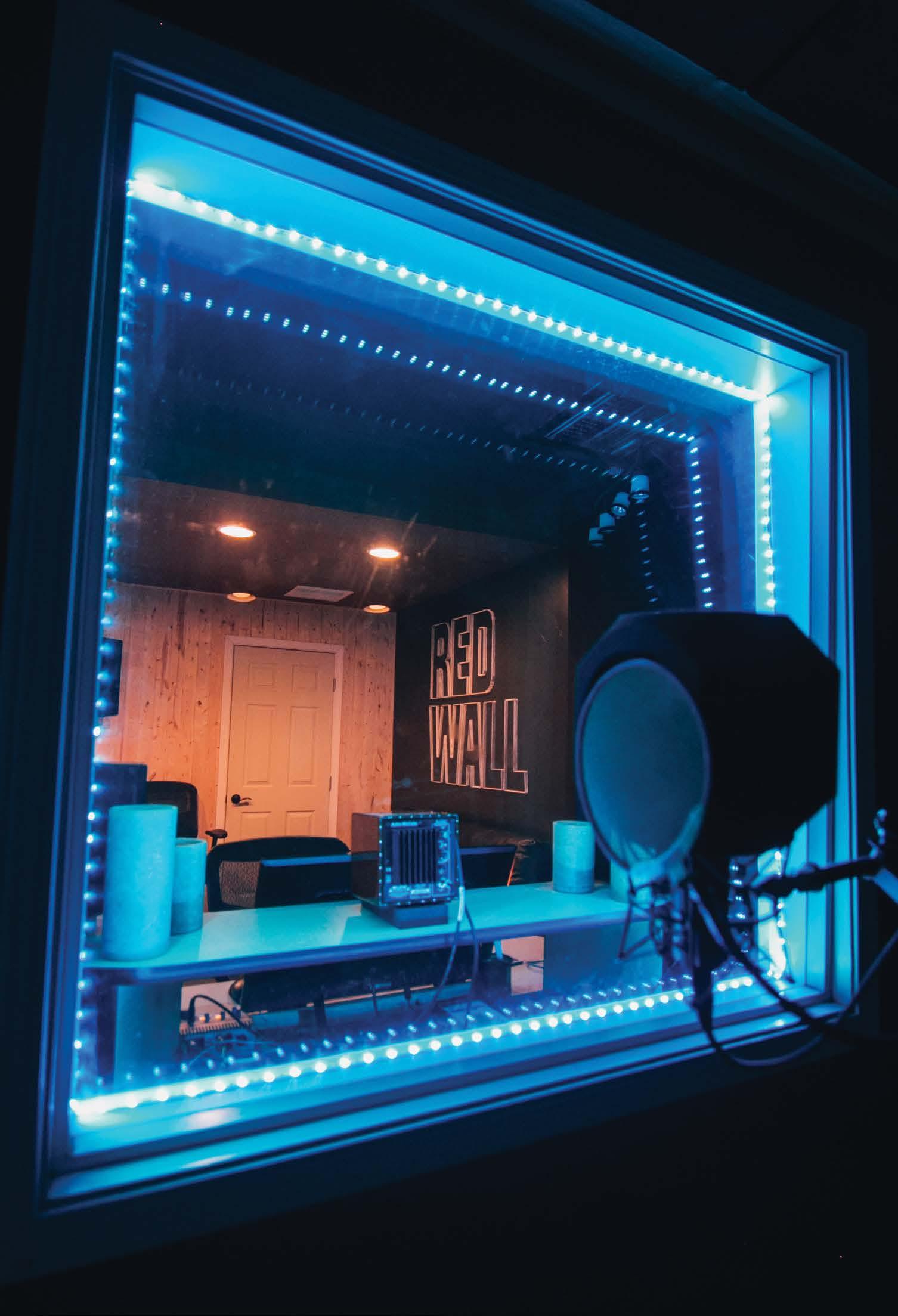
62 Sight & Sound 11.1
built for music videos—from rap to heavy metal—directed and edited by Loera or by artists’ own teams who book the space and fly in to shoot. “The last three videos we did were for LA, Las Vegas, and Texas clients,” Loera says. “We’re noticing that we’re pulling people from bigger markets, bigger budgets.”


Redwall’s premiere facilities and services are modeled after what Loera calls an LA vibe, “as far as the quality, as far as the professionalism.” The philosophy has paid off and lured, on the video-production side, an LA-majority client base. “Taking the business down south is not only logical, but practically a guarantee for greater success,” Loera says. But Redwall is here to stay, to build something that perhaps has always been here. “From what I see, the Bay Area creates a lot of what’s popular, and it gets taken to other places and rebranded,” says Loera. “The Bay Area creates a lot of the dances, the sound, the lingo—all that comes from the Bay Area. We just haven’t been able to hold onto that and take full credit.”
While to the outside eye San Jose and the Bay Area’s music scene has perhaps been bereft of a distinguishable identity, Loera sees a shift. “We will be a player pretty soon,” he says. “The Bay Area will be a big city for music. So there’s a lot of pride that comes with being here and being able to run a business like you would in LA, as opposed to just getting up and going [there].”
This kind of big-picture prediction doesn’t sound as lofty when considering Redwall’s new second location—a position that’s a far cry from where Loera was only a few years earlier, passing out free beats. Still young, the expanding Redwall has passed the point of merely staying afloat as a business, though Loera says there’s no room for complacency. His production team is just a five-man team, and Loera works 16-hour days.
But there’s no place he’d rather be. “There’s plenty of times where I’m like, ‘You know what...I’m taking a month off.’ And I let everybody know, and I say it,” Loera says. “And then the next day, I’m here.” C
63
Written by Brandon Yu
Photography by Daniel Garcia Facebook kidandersenmusic
Kid Andersen
Greaseland Studios
Sitting along an unassuming suburban strip in South San Jose, at the edge of Los Gatos, Greaseland Studios isn’t exactly a blink-and-you’ll-miss-it recording studio—it’s more like a squint-and-you’ll-stillmiss-it kind of space. After getting close enough, the sound of blues music, muffled in the lowslung three-bedroom house sitting inconspicuously between its neighbors, clues you in.
Perhaps this suburban exterior fits awkwardly with the studio’s name, but once inside, the moniker suddenly feels like the only one. Seemingly every surface inside the crowded house is plastered with photos, records, and memorabilia. Sound absorption panels are haphazardly stuck to the walls and ceiling. A grand piano fits tightly in the kitchen, and guitars of every kind hang from the walls of the living room—where more pianos and a set of drums sit. It’s grungy DIY, and where, for the last 12 years or so, a modern giant of blues music has lived and recorded music.
“There’s a window there but don’t tell my landlord,” says Christoffer “Kid” Andersen, a gregarious bear of a man and perennial nominee at the prestigious annual Blues Music Awards. He’s pointing at a side of the studio’s control room, a tiny converted garage that he’s sitting in the middle of, surrounded by computer monitors, various pieces of recording equipment, and a chaos of wires spilling everywhere in tangles. “When we got this place, a place that was big enough, I had a friend who worked as a janitor for a radio station,” the 38-year-old recalls. “He was in charge of literally disposing of some old equipment they had—an old eight-track tape recorder and mixing boards and a bunch of stuff. So we just went there and took everything that worked, or that we could get to work, and started the studio with that.”
There’s a homey, if scrappy, aura to Greaseland, and bands and artists appear to enjoy the inimitable space. Countless albums have been recorded here, and on this Wednesday afternoon, the band Awek, coming all the way from France,
is working through a rollicking blues track, one you can’t help but tap your feet to, if not get up and dance.
Andersen portions his time among Greaseland, recording and producing for blues artists, and touring as the guitar player for the blues band Rick Estrin & the Nightcats, a band he has played with for several years. He bears the visual cues of a bluesy character: his blonde hair is slicked back; he wears a pair of brown-hued, tinted Ray-Bans; his voice rumbles agreeably, like the sound of a motor engine idling; and he carries an almost-Southern drawl when he talks.
And yet Andersen, a man who has won the Blues Foundation’s Keeping the Blues Alive Award, is from southern Norway. He came to Santa Cruz when he was 21 on a gig to play with blues saxophonist Terry Hanck’s band. It was his first time coming to America. “It was a trip, man,” he says. “It took me about six months to kind of get the hang of it, ’cause I had my own idea of what America was like. I watched every episode of The Simpsons, every episode of Seinfeld. That was, like, my cultural education.” The music, though, he knew well—he was pulled into blues and roots music and started playing at the age of 11.
Since arriving nearly 20 years ago, Andersen has largely remained here in the South Bay, while also touring the world, building a career and prominent reputation as a bluesman. Behind him in the control room, a photograph depicts a slightly younger version of Andersen, bowled over on stage, in the middle of a guitar lick, the image a frenzied blur—Andersen, the Norwegian, in action.
Elsewhere at Greaseland, in between takes of Awek’s recording session, Andersen is looking for a can of adhesive before finally finding it in the laundry room that doubles as the vocal recording booth. “I give up,” he says. “If it falls, it falls.” He’s spraying the surface of the ceiling, trying to force a sound absorption panel to stick. The foam piece won’t give. “Well, at least we get some good fumes in here.”
C
Instagram kidandersen Twitter kidandersen
64 Sight & Sound 11.1

“I had my own idea of what America was like. I watched every episode of The Simpsons, every episode of Seinfeld. That was, like, my cultural education.”
– Christoffer “Kid” Andersen

“Just remember that music is art. People keep forgetting that. Yeah, you have to be serious about the business part of it, but enjoy your music. Have fun.”
– Da Hermit
Written by Demone Carter
Jerry Dalalo Da Hermit
There is a tried-and-true narrative about the arc of show business success, and it goes something like this: a hard-working kid from the middle of nowhere hones his or her talent, becomes a local celebrity, and then is discovered and whisked away to Hollywood. End scene, full stop, happily ever after. But like most things, the truth is stranger and more complicated than fiction—and often more interesting. Such is the case with Jerry Dalalo. Flirtation with music industry success, a major label record deal, and a nationwide tour were not the end of his story but rather just the beginning.
The story starts with a middle-school-aged Dalalo cutting his teeth as a DJ in the late ’80s Bay Area mobile DJ scene. After working the local house party circuit, Jerry decided to study music engineering at Foothill College. His course of study led to a chance meeting with the late, great college radio DJ Spiderman and guest spots spinning underground hip-hop on Foothill’s KFJC as well as Stanford’s KSZU.
On the heels of their major label release, there was the obligatory tour, song placements in video games, TV shows, and movies. Jerry was even an extra in Sylvester Stallone’s 2001 film, Driven, which used Insolence’s “Poison Well” as a critical part of its score.
The money and opportunities were flowing, but like many music industry memoirs, Jerry’s tale took a cautionary turn. Without getting into specifics, Jerry says he got exposed to the more insidious side of music industry economics, and it left him with a bitter taste in his mouth, but also a resolve to double down on his personal ethics.
Jerry left Insolence in 2007, citing fatigue with the music industry run around. And while many would assume this is where the story ends, it is merely the first act. Drawing on all of his experience, Jerry continued to produce and record for a wide variety of acts, including Mike Shinoda, Motion Man, Illmind, Dan the Automator, D-Styles, and Pumpkinhead. He’s also been a go-to sound engineer for indie hip-hop labels like Stones Throw and Threshold Recordings, with some corporate voiceovers and sound design gigs thrown in for good measure.
Now, as he enters his second decade as a working musician, Jerry is focused on giving back to local at-risk youth through his work with SJ Digi Youth Digital Arts Camp and other community organizations. Jerry is often reluctant to talk about his music industry experiences, but he does offer the following advice to any young artist who will listen: “Just remember that music is art. People keep forgetting that. Yeah, you have to be serious about the business part of it, but enjoy your music. Have fun.”
Photography by Arabela Espinoza Instagram darealhermit Twitter DaHermit C
Another random occurrence led to the break of a lifetime. Jerry, who was known by then as “Da Hermit” because of his penchant for holing up in his home studio for days at a time, answered a Craigslist ad by a drummer looking for a DJ for a side project. Several jam sessions and rehearsals later, Dalalo was the full-time DJ for the Santa Clara rap-metal outfit Insolence. In 2001 Insolence signed a deal with Madonna’s Warner Bros–backed imprint, Maverick Records, and before he knew it, Jerry was on the fast track to the show business dream. “I remember the day that we got signed, they wined and dined us. We got picked up in a limo and went to this party with models,” he recalls with a chuckle.
67
Written by Brandon Roos
Photography by Daniel Garcia
Ghost and the City ghostandthecity.com
Instagram ghost_andthecity
Twitter ghostandthecity
Curl Consultant thecurlconsultant.com
Instagram kiafaystyles
KIA FAY
As a stylist and vocalist, Kia Fay utilizes her disparate creative outlets for the same unified purpose: helping others celebrate their authentic selves.

68 Sight & Sound 11.1
As is the case with many a music fanatic, Kia Fay’s intimate relationship with sound stretches past the point of tangible memory. She remembers learning rhythm (and math) from beating on pieces of cardboard as a child, of singing practically her whole life, and the music of Michael Jackson, Duran Duran, and Beastie Boys being her first musical totems.
Coincidentally, it was her love for the immortal MJ that first got her on stage with Ash Maynor and Ghost & the City (GATC). They needed a singer for a Halloween show, and with “Thriller” on the set list, Fay jumped at the chance to sing her idol’s music. “I was like, ‘I get to wear a costume, I get to sing MJ. This is all golden,’ ” she fondly recalls. “I didn’t realize that was an audition of sorts.” That guest spot was the first collaboration in what’s now been a six-year journey with the group, whose sound features a brooding musical stew of soulful, jazzy, and electronic components.
The Time EP—which earned the band accolades from Afropunk and Bust magazines and slots opening for Hiatus Kaiyote and the Internet—has brought the brightest attention yet to GATC, whose latest album is the result of, in Fay’s words, an “executive decision to do only what we wanted in its pure form.”


It’s their first work to feature Fay’s full creative input and the most direct outgrowth of her “mind-fi” with Maynor, the term for their near-telepathic musical connection. “I don’t fit specifically into one box or another in a lot of respects, so it’s cool to finally be able to make music where I don’t need to try anymore,” notes Fay with a laugh.
Accepting authenticity rather than fighting it is a huge theme in Fay’s story. Despite years in choirs, she noticed that she never got to solo until she was at UC Berkeley singing with the female a cappella group the California Golden Overtones. It was a refreshing change for her voice—full-bodied, emotive, and powerful—to take the spot-
light. Her voice feels like GATC’s secret ingredient, with the music seemingly shaped around her distinct delivery.
Yet music hasn’t been her only outlet for authenticity. Since relocating to San Jose, she’s also established herself as the Curl Consultant, advocating for clients to celebrate their hair in its natural state rather than modifying it to conform to societal standards. “I joke that it’s driven by stubbornness, but it seemed unacceptable to me that in a space as diverse as San Jose, with as many different permutations and beautiful combinations of humans that we have, there weren’t more folks dedicated to encouraging people to exist in their natural state as it relates to their hair,” says Fay.
She first started working with hair out of necessity. Fay spent time doing theater, where she became the de facto stylist because no one could properly style her hair. However, she never saw the trade as a viable career option until her move to San Jose
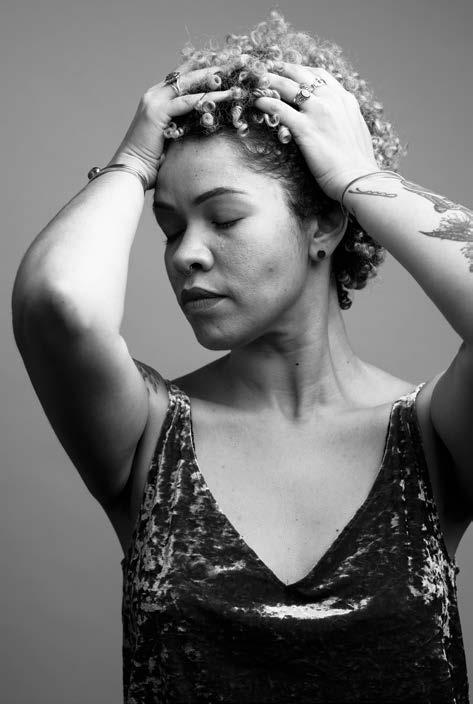








70 Sight & Sound 11.1
propelled her to be the change and to establish a space the city desperately needed.
“The bulk of the feedback I’ve received has been that the work I do is liberating,” admits Fay. “That’s the best-case scenario for me: freeing anybody from a restriction they thought they had that was only an artificial restriction. Hopefully I can plant that seed for folks, and they in turn will stand as beacons wherever they are.”
As a person of mixed descent who struggled over the years with where she fit in, Fay’s now using her two creative pursuits to help others recognize and celebrate their

own unique tastes and identities through communion and connection. “We have to stop being so wedded to [the idea that] ‘This is what beauty looks like. This is what music looks like,’ and just accept beauty when we see it and hopefully foster what comes naturally to people and stop encouraging them to resist their more authentic selves, in any capacity,” she says.
C
71
“I don’t fit specifically into one box or another in a lot of respects, so it’s cool to finally be able to make music where I don’t need to try anymore.”
– Kia Fay
Super Stacked
Every comedian experiences an off night when they just can’t orchestrate a positive response to any story, punch line, or antic. But if bombing kept every amateur comic from returning to the stage, there wouldn’t be any to create a comedy scene that begins to knit itself when fellow comedians find one another at open mics.
All four show producers—Ryan, Grayson, Tyler, and Austin—met at Caffé Frascati’s Wednesday Comedy Night Open Mic, run by fellow comedian Jorge Sanchez. “I met Grayson right before his first set three years ago,” Austin remembers. “I asked him, ‘How long have you been doing stand-up?’ He said, ‘I’m about to go up
for my first set.’ I’m like, ‘That sucks, that’s scary.’ ” It’s exactly why comedians need one another.
“Gradually, you meet more people you realize are starting to do exactly what you want to do,” Grayson says of the stand-up community here. In promising baby steps, these performers figure out how to create and regulate the stage time they’re starved for. The time allocation for most stand-up sets runs only three to five minutes, so reliable platforms for comics to test their crowd skills are in demand.
A free, quality comedy show like Super Stacked— run by comedians, for comedians, and for everyone else—brings local
acts to their most receptive audience. With San Jose becoming one of the most expensive places to live, the demographic that thrives consists of mostly young professionals. “And they don’t want to spend money on just material things,” Ryan points out. “They want experiences. It’s right in front of them, in the making.”
The beauty of a rising scene, as opposed to an established one, is its collaborative energy. In addition to producing Super Stacked, Tyler has a show at Santa Clara Valley Brewing, Ryan runs two brewery shows and one at a GameStop, and Austin hosts one in Livermore.
“We’re spread out, tactically placed,” Tyler says
Written by Esther Young
Photography by Daniel Garcia
Every other Saturday at Studio by Terra Amico 460 Lincoln Avenue San Jose, CA Facebook superstacked Instagram superstackedcomedy
A world without comedy is a world unhinged by the absence of laughter. The South Bay needs good comedians, and Super Stacked Comedy Show fires rapid endorphins into your Saturdays, one solid lineup at a time.
72 Sight & Sound 11.1
 Ryan Sudhakaran | Tyler Stannard
| Grayson Garcia | Austin Blaylock
Ryan Sudhakaran | Tyler Stannard
| Grayson Garcia | Austin Blaylock



 Instagram: ry_suds
Ryan Sudhakaran
Instagram: grayson_garcia
Grayson Garcia
Instagram: tylerstannardcomedy
Tyler Stannard
Instagram: austinblaylock
Austin Blaylock
Instagram: ry_suds
Ryan Sudhakaran
Instagram: grayson_garcia
Grayson Garcia
Instagram: tylerstannardcomedy
Tyler Stannard
Instagram: austinblaylock
Austin Blaylock
of the local comedy shows that have popped up in the last few years—booming, but not oversaturated. Shows that run on the same night at different times are great for comedians who can hit multiple venues in one night.
The first Super Stacked show began with Ryan and Grayson driving down Lincoln Avenue, looking for a business to host their own comedy show. “We kept getting turned down by dive bars—we assumed we had to run it in a dive bar, where most stand-up takes place.” Once that assumption disappeared, they struck gold: walking around the complex containing Hapa’s Brewery, they found the woodshop run by Trevor Raineri, who agreed to using the space. They launched the show in January 2017, right after Sketchfest, the San Francisco comedy festival. “The first show was just all of our friends and family. After that we started advertising on Facebook, and we put
a wooden board behind us as a backdrop. Over time I think people got really interested because it’s such a unique venue, a very hip wood store.”
For a South Bay comedian hunting for those lucrative opportunities to perform for an eager audience, Super Stacked now attracts about a hundred crowd members per show. The producers observe a mix of brewery clientele and Willow Glen residents in their regulars. “The location is six minutes from downtown San Jose and six minutes from downtown Willow Glen,” Tyler says. “You’ll find there are jokes half the crowd laughs at, the other half is like, ‘ehh,’ Ryan adds. “It’s like a slice of San Jose.”

To run the biweekly show, the four friends communicate online with a spreadsheet, rotating hosting duties, and each booking a comedian. The whole group vets each comedian they book, whether from San Jose or out of town. “We
won’t book a comedian we don’t all think is funny… if some of their bits might be a bit too risky, or if the direction they’re headed might not be where our show’s headed,” Grayson says. The order is carefully curated, too: low-energy comics are staggered between comics with a flashier personality, and strong comedians open and end the show.
The ingredients and formula have continued to bring magic. “We leave every show feeling like it’s the best one yet. You feel comfortable in the lineup, part of something bigger,” Tyler says. “Satisfaction comes from people coming out and telling us they enjoyed the show.” That energy promotes quality. “You want to work really hard for it,” Austin says. “I like to put on a show for people that I would like to see myself,” Grayson sums up. “I’m going to try to make somebody’s day, make somebody happy.” C
75
RADIO
KKUP
91.5 FM
Written by Diane Solomon
Photography by Daniel Garcia
kkup.org
91.5 FM Instagram 915-fm-kkup
ECLECTIC, LISTENER-SUPPORTED, AND VOLUNTEER-RUN RADIO
Radio KKUP is a small radio station with big reach. It’s tucked inside an old industrial park next to Highway 101 in San Jose. It broadcasts commercial-free online and on the FM radio band. Its signal at 91.5 FM is heard from Fremont and Palo Alto south to King City through the counties of Santa Clara, Santa Cruz, San Benito, and Monterey.
76 Dine 10.5
76 Sight & Sound 11.1
Radio KKUP is a small radio station with big reach. It’s tucked inside an old industrial park next to Highway 101 in San Jose. It broadcasts commercial-free online and on the FM radio band. Its signal at 91.5 FM is heard from Fremont and Palo Alto south to King City through the counties of Santa Clara, Santa Cruz, San Benito, and Monterey.
KKUP was founded in 1972 as a nonprofit community radio station by a group of people that cofounder Dana Jang finds hard to describe. “It wasn’t like one demographic,” says Jang. “We were college students, a mailman, a housewife, and musicians.” Most were volunteer DJ’s at KSPR, a tiny 4-watt community radio station operated by the Pinewood Private School in Los Altos. When the school’s owner closed KSPR, Jang, and other volunteers applied to the FCC for KSPR’s vacated license, and formed Radio KKUP with the help of the Cupertino Jaycees. Jang kick-started this project, was a KKUP volunteer in its early years, and went on to a career in radio broadcasting at KSJO, KOME, KBAY, KEZR, and Live 105. Today he serves on KKUP’s board of directors. “I just wanted to have a station,” says Jang, “that would play music that wasn’t heard on any other radio stations.”
KKUP is one of the few radio stations in the US that is 100 percent listener supported and 100 percent volunteer run. About 120 volunteers operate the station and engineer its broadcast. On-air volunteers aren’t called “DJ’s,” they’re called “programmers.” In addition to producing and hosting their shows, they determine the

77
77
Dana Jang
KKUP Co-founder and Board Member
content and operate the broadcast equipment. “It’s the big guys helping the little guy,” says Jim Thomas of the volunteer radio engineers. Volunteer engineers are experienced professionals from ABC, KRTY, KLIV, and KBAY. They enable KKUP to broadcast 24/7, and they maintain KKUP’s antenna on Mount Loma Prieta.
Thomas is a programmer, has served on KKUP’s board of directors for 32 years, and is current board chair. Thomas and his wife, Gratia Rankin, joined KKUP in 1986. They were volunteer DJ’s at KSCU, Santa Clara University’s radio station. They weren’t there long because they wouldn’t comply with KSCU’s mandatory playlist. “We got fired for playing too many John Coltrane records on a jazz show,” says Thomas. They joined KKUP soon after. Their programs exemplify KKUP’s eclectic programming. Over their years at KKUP, they’ve produced blues, gospel, jazz, folk, country, bluegrass, psychedelic rock, oldies, and Bob Dylan programs. Thomas has over five thousand LPs and CDs, and like most KKUP music programmers, he draws from his own collection. He rarely uses KKUP’s library, which has over a thousand recordings.
Thomas says listeners like KKUP because it’s commercial free and it has music that they can’t find on other stations. “Except for KCSM, we have more jazz than anyone else in the Bay Area,” says Thomas. “We have more blues, more reggae, more folk, and different kinds of programs that people really enjoy.” The different kinds of music programs are psychedelic rock, performances of the Santa
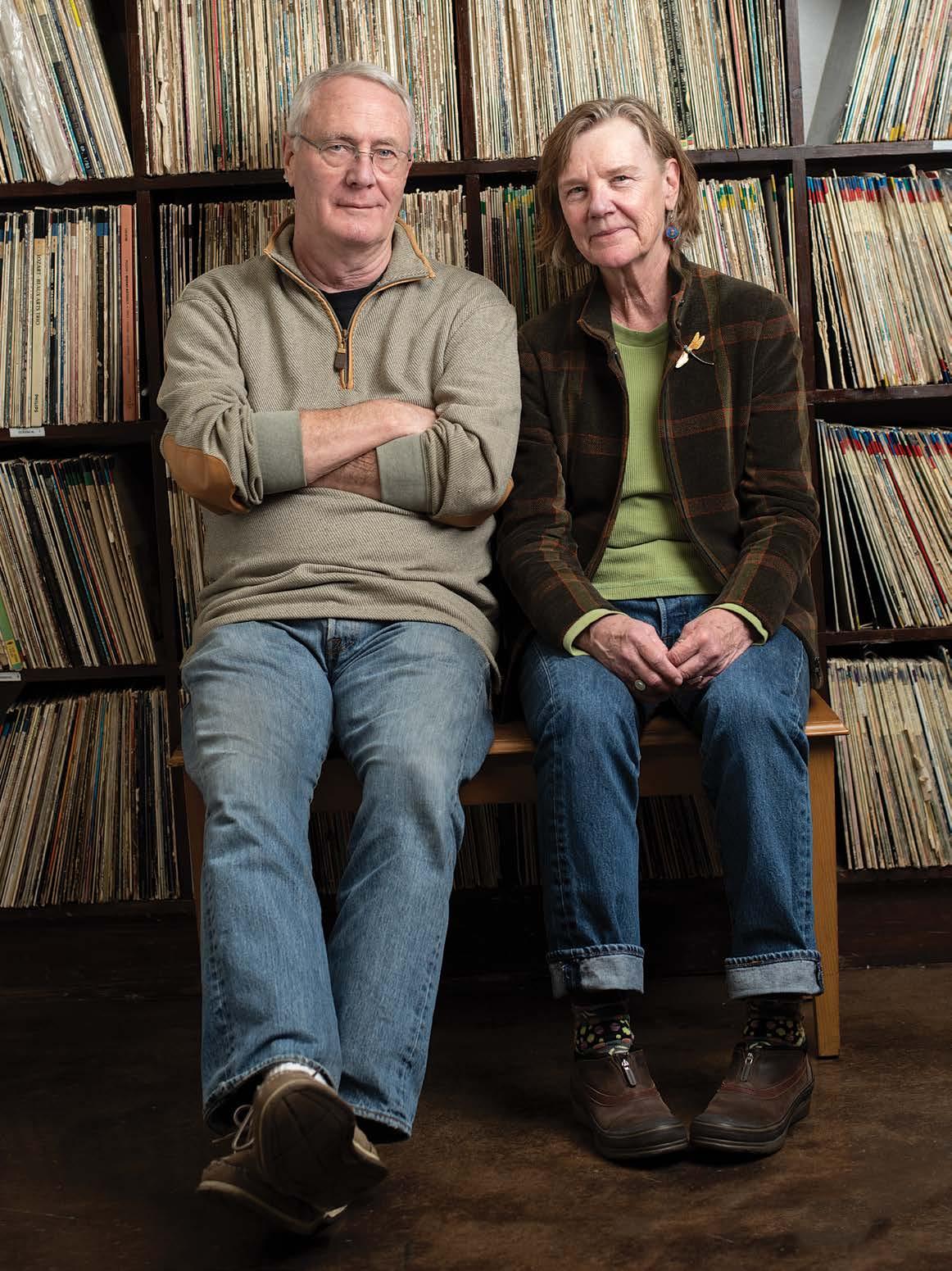
78 Discover 11.0
Jim Thomas and Gratia Rankin Board Members
Rachelle “Poetita” Linda Escamilla (L)
“Out of Our Minds Poetry Hour” Wed. 8pm
Dan “DJ Toast” Maley (R)
“The Ska Review” 4th Sat. 6pm
Cruz Symphony, ska, New Age, bluegrass, and many world music genres. Talk radio programs feature recordings of Buddhist philosopher Alan Watts and old-time radio programs and include one of the longest-running radio poetry shows in the United States.
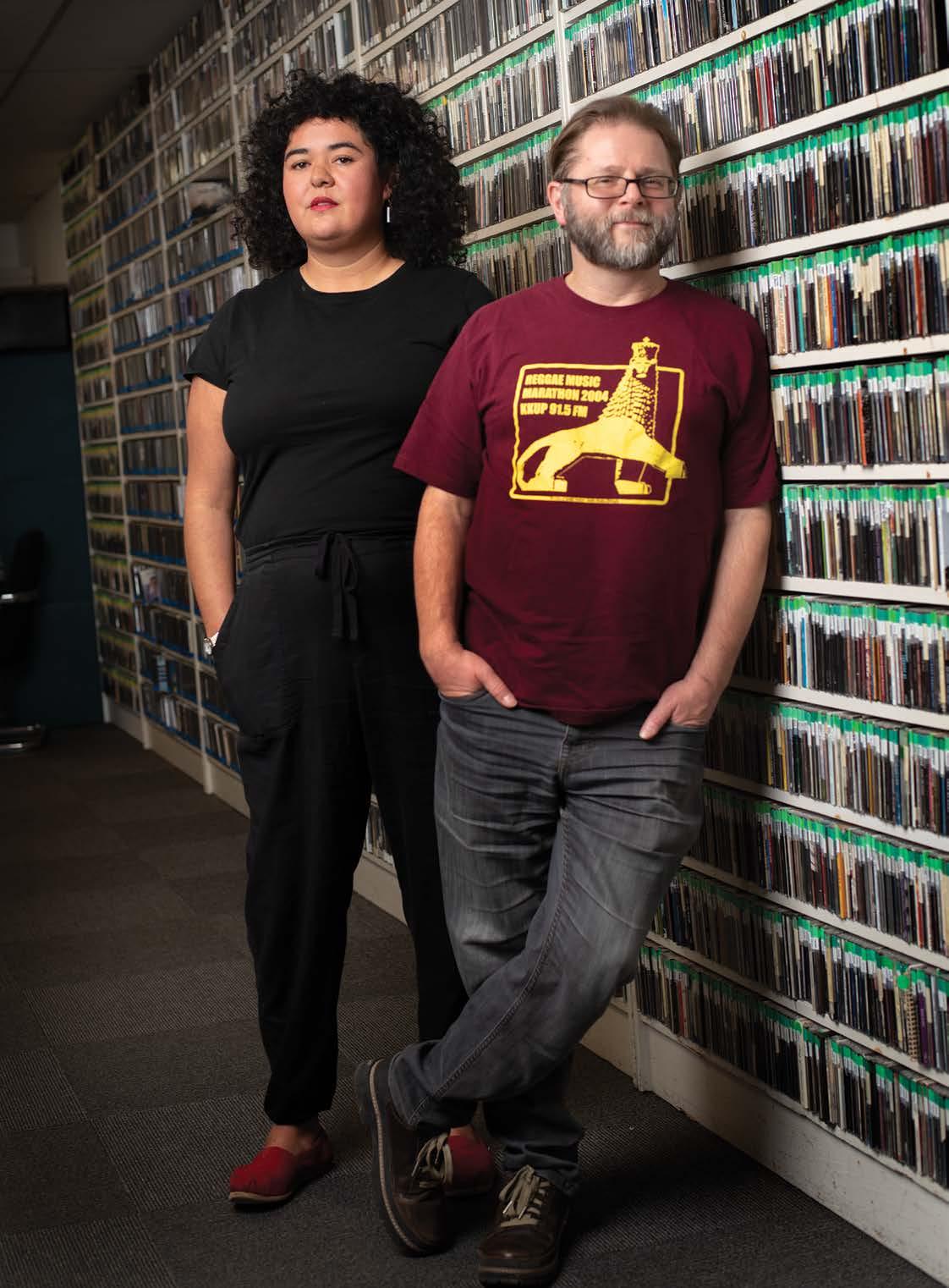
Rachelle Linda Escamilla’s on-air name is Poetita. She hosts “Out of Our Minds,” KKUP’s poetry show. Like most KKUP programmers, Escamilla isn’t merely broadcasting content. She’s connected to her programming’s culture, community, and events, and she shares these with her listeners.
Escamilla founded the Poets and Writers Coalition at San Jose State University and teaches creative writing and social action courses at California State University Monterey Bay. She also creates programs for the Salinas Center for Arts and Culture. Escamilla connects her listeners to these organizations and the Bay Area’s poetry scene by recording the readings that she attends and broadcasting them during her program. Poets are also featured on her program, where they read and talk about their poetry. “It’s not about just showcasing those who are at the top of their careers,” says Escamilla, “but giving new poets a chance to have their voices heard and bringing this to KKUP’s listeners.”
Listeners keep KKUP on the air by providing 100 percent of its financial support. KKUP doesn’t seek or accept grants or underwriting. “The listeners tell us what to do by pledging during our marathons,” says Thomas. KKUP’s marathons are what Thomas calls
79
79
“friendly fundraising.” They are KKUP’s only fundraisers. Each of KKUP’s 11 departments takes up a weekend and plays only the music of their department’s genre. Listeners are asked to either call KKUP and pledge their financial support or to donate online. “When listeners contribute $8,000 during a folk music marathon,” says Thomas, “we know they like folk, so we keep playing it.” Loyal listener/supporters volunteer during marathons. They answer the telephones and take the callers’ pledges of support.
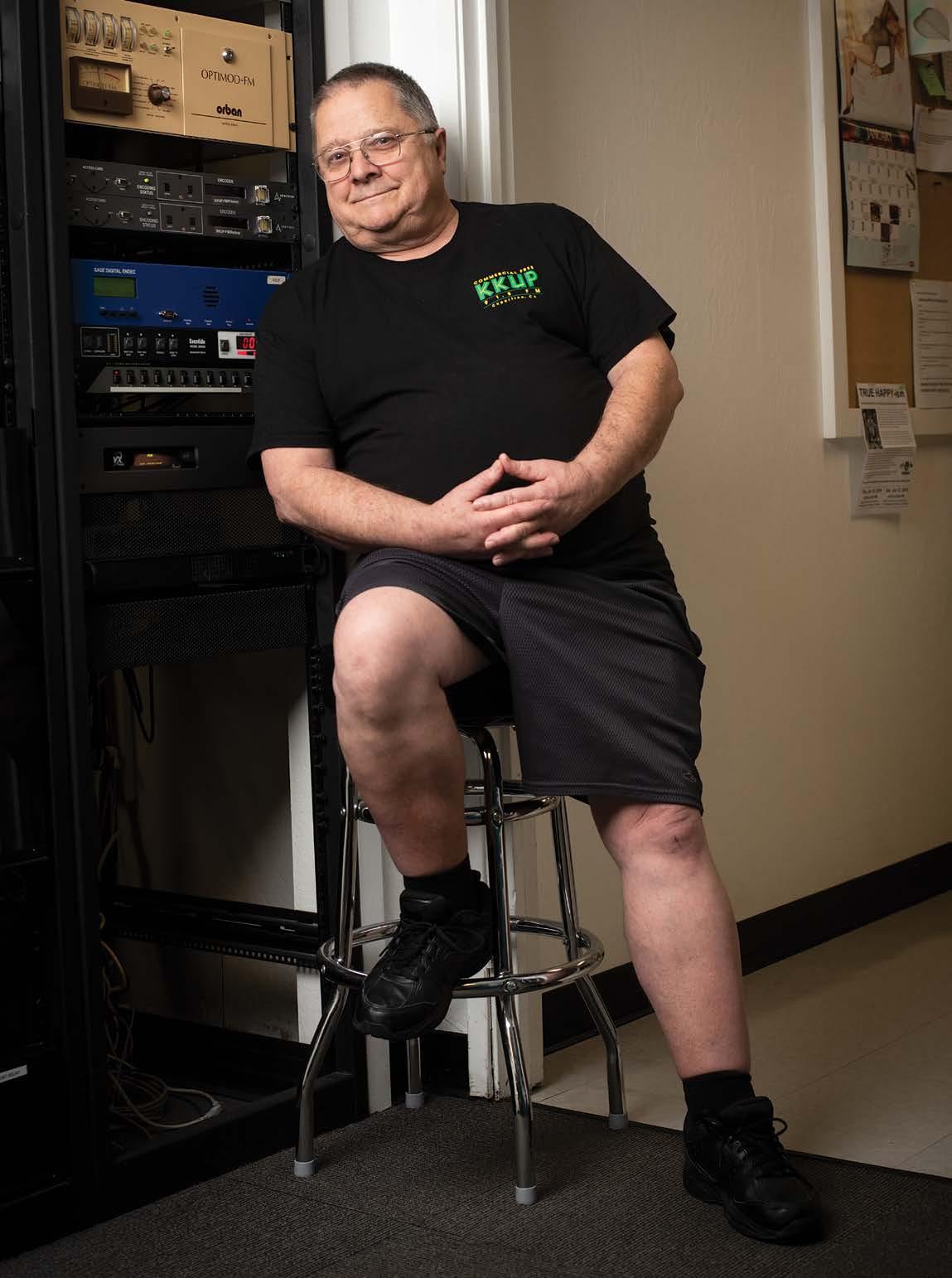
It was midnight during a blues marathon when volunteer Denise Peralez noticed that there were more callers than telephone volunteers. She called her son for help. Her son is San Jose City Councilmember Raul Peralez, and he’s a listener/supporter who also donates items that KKUP offers as premiums during marathons. He dropped everything, got dressed, and immediately came to KKUP. “My mom is the real volunteer,” says Peralez. “She regularly volunteers her time during marathons.” While his mother took calls, Peralez got on the air with programmer Jimmy Jam and encouraged more listeners to support the station.
Jimmy Jam is Jim Hernandez. He heads KKUP’s Latin department. This department’s programing is geared toward Latino and Chicano listeners. Programs feature the music of most Latin American countries. The Canta Brazil program—along with Hawaiian, Turkish, South Indian, Celtic, and African music programs—is part of KKUP’s world music department. Hernandez says KKUP’s Latin
Michael Berry Program Director
music programming is unique because it includes cumbia, East Coast salsa, Tejano, Latin American folk, Latin rock, and oldies.

Public affairs programming includes Latino USA, a national news and cultural program that’s produced by NPR. Local events, festivals, public talks, and important community meetings are regularly announced. KKUP provides its listeners with information about their civil rights and how to protect themselves. “Many Latinos, especially farm workers, won’t reach out for help,” says Hernandez, “but if you give them information from a trustworthy, reliable source, they will use it.” This programming, adds Hernandez, serves the underserved farming communities of Gilroy, Hollister, Watsonville, and Salinas as well as East San Jose. “You still have people who will never use a computer or who don’t have the latest tech,” says Hernandez, “but they do have car radios.”
But Jang says that KKUP shouldn’t rely solely on radio to reach current listeners or attract new ones. He believes that smart speakers like Google Home and voice services like Alexa could make radio obsolete. “We have to look for ways,” says Jang, “to share our musical passions with our listeners on whatever device they’re using.”
Thinking about the future, Jang says KKUP must keep improving its online digital assets. Thinking about the past, when he helped start KKUP, Jang says, “I never dreamed it would be what it is today.”
C
Jim “Jimmy Jam“ Hernandez “The Latin Soul Review” 1st Sat. 9am Mary“Marigold”Sierra Latin Rock, Jazz, and Soul Featured on Ajuas Y AJuas Mas 1st and 3rd Tue. 6pm 81
Written by Brandon Roos
Photography by Daniel Garcia miguelkultura.com
Social Media miguelkultura
Miguel Kultura

Juan Miguel Saucedo, 25, sits comfortably in an office chair at the helm of his cozy recording setup, intermittently burning sage. Ref erence speakers, keyboards, and a mixing console consume table space, and a drum kit is tucked away in a back corner of a converted cellar. It’s a concrete-walled nest of creativity that birthed the per sona Miguel Kultura, Saucedo’s latest creative incarnation.
In a way, the space has come full circle, and Saucedo himself has returned to his origins. It was in these same confines a decade ago when he first set up a USB mic to start rapping over instrumentals with two friends as Money Hungry Click. Inspired by the thriving southern rap scene at the time, they sold copies of their first mixtape while freshmen at Willow Glen High School.
“[We were] just being hoodlums and trying to chase money and hustle,” he says of his first foray into music. For Saucedo, music be came an alternative to the gang life he saw friends and neighbors fall into growing up. “I like to think of myself like Kendrick [Lamar]. I was always around it and was this close to joining a gang but never had the commitment to do it,” he shares, noting that he didn’t know if that was the lifestyle he wanted to lead.
Thankfully, those childhood years listening to Tupac in his older brother’s red Camaro Z/28 hinted that something else was written in his story. Once Saucedo got his hands on the PSP game Traxxpad, he shifted his energy toward making beats, later doing so under the aliases Beats by Fly and Funkadelic Fly. (Both are variations of his inescapable neighborhood nickname, “Mosca.”) After years of hon ing his craft with other young creatives at various community cen ters around San Jose, he joined up with young multimedia collective BAMN (By Any Media Necessary).
Miguel Kultura was birthed out of a time of serious physical con cern and deep spirituality. While still with BAMN, Saucedo began dealing with a mystery illness that had him believing he was slowly inching toward death. Through visions and meditation, he heard a call to establish a new musical identity, one where he returned to rapping.
“Trabajando,” or “Working,” was his first foray into that new sound and the first time he wrote lyrics in Spanglish. With a buzz
82 Sight & Sound 11.1

83
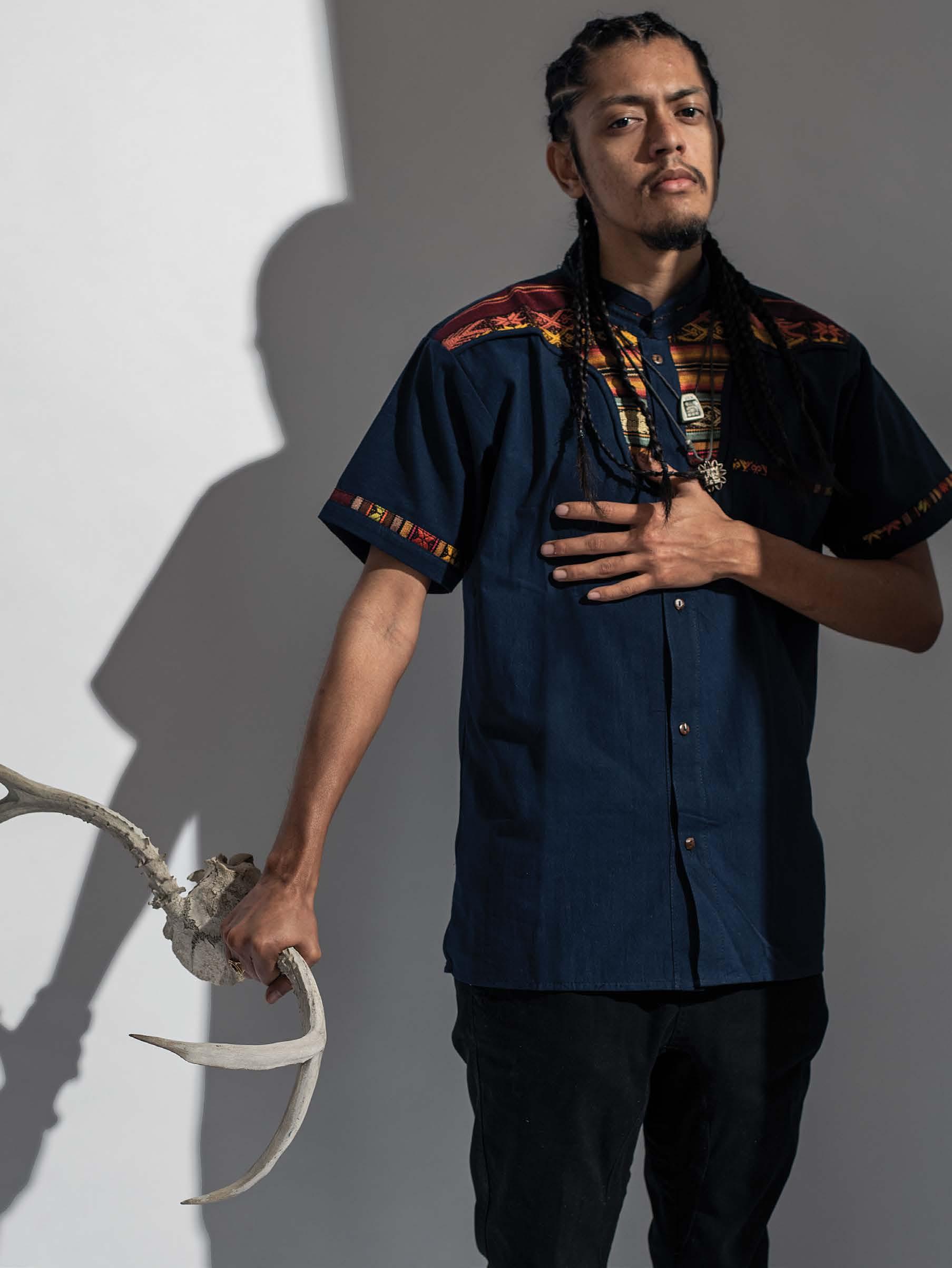

ing synth and skittering percussion, Saucedo raps about the Latino struggle for visibility and acceptance, with lines like, “My father said we came here to work / Latinos go hard every day in the dirt” and “The son of a farmer can’t be tamed.” He dives more fully into that voice on “Conformar,” similarly Spanglish but more Spanish-forward. The song tackles the notion of conformity. It also alludes to the idea of resilience in the aftermath of losing friends too soon to depression.
“As a Mexican American growing up, you have these two identities,” he points out. “People from Mexico look at you like you’re not one of them, and people here don’t look at you like you’re American either, so it’s always a challenge to be a Mexican American. As I get older, I ask myself, ‘How can I merge these two identities?’ ” By leveraging his proficiency in both languages (he grew up bilingual), Saucedo hopes his work as Miguel Kultura fosters a bridge of connection and understanding across cultural and language barriers.
The journey has also helped him better acknowledge his musical roots outside hip-hop, allowing him to reconnect with the traditional Mexican songs his father taught him on piano as a child and the continued influence of local Norteño music legends Los Tigres del Norte.
A video for “Conformar” is forthcoming, accompanied by a minidocumentary series that shares stories of young local Latinx creatives pushing in their own way to not conform to societal and cultural expectations. In that sense, Saucedo is using his creative work to speak to a greater cultural struggle.
Sometimes, Saucedo speaks about Miguel Kultura in the third person. It seems to be a recognition that his work under this banner doesn’t stem from his creativity alone. Based on all that’s led to this creative moment, Saucedo believes something greater is at play. “It’s not so much about the accolades, the rewards, whatever. This is what I’m supposed to be doing,” he admits, pointing to the significance that legacy plays in how he views his work. “It was already written in the stars.”

“As a Mexican American growing up, you have these two identities. People from Mexico look at you like you’re not one of them, and people here don’t look at you like you’re American either, so it’s always a challenge to be a Mexican American.
C
As I get older, I ask myself, ‘How can I merge these two identities?’.”
85
– Juan Miguel Saucedo

“I like to explore and challenge myself, but the song needs to stand on its own.”
Kaplow will release his new album, TimeSpentInBetween, at Michael’s on Main in Soquel on April 13, 2019.
– Joe Kaplow
Written by Brad Sanzenbacher
Photography by Daniel Garcia joekaplow.net Instagram joekaplowmewzik
Joe Kaplow
In his song, “I Said I Was Going and I Went,” Santa Cruz’s Joe Kaplow sings a reminder, perhaps to himself. “You are what you do,” he says, and by that definition, Kaplow is a folk singer through and through. As an acoustic songwriter who recently opened for the legendary Woody Guthrie protégé Ramblin’ Jack Elliott at Santa Cruz’s Kuumbwa Jazz Center, there’s no mistaking the scruffy Kaplow’s musical lineage once he starts singing and plucking his guitar.
Like Ramblin’ Jack, Kaplow has done his share of time on the road. Before settling in Santa Cruz, he spent nine months traveling the US, leaving his home in New Jersey and roaming from town to town—Baltimore, then West Virginia, then out to Colorado, crashing with his friends and booking shows along the way when he could. It was a learning and growth experience for him, and he spent a lot of time at campsites in the Rockies writing songs.
Currently living in Soquel, in a house affectionately known as “the Rat’s Carlton,” Kaplow has made a name for himself over the last four years, playing shows at regional festivals, Sofar Sounds events, and other venues in the area.
As a songwriter, Kaplow says the song comes first. “I see myself as being influenced by Paul Simon or Neil Young,” he explains. “They started
with folk music, then got into rock and jazz and jam bands and eventually blended them together. I like to explore and challenge myself, but the song needs to stand on its own.”
As a graduate of Boston’s Berklee College of Music, Joe has a strong background in music theory and performance, and on stage, he comes off as polished and confident. Still, he admits that a songwriter can never truly know what is going to resonate with an audience until it’s been played. “There’s a fourth wall when you’re a musician between you and the audience,” he says. “There’s a plane where there’s no real rhyme or reason as to what makes it through to the other side. The goal is to connect with people, and you’re never going to be sure what’s going to do that.”
To help with that, he tries to trust his voice and his instincts and bring a strong ethic to push himself to write songs that he feels are high quality. He says he doesn’t necessarily have an ethos in songwriting but finds his lyrics veering toward the existential. “I don’t like to write about small subjects. I like to write songs more like ‘Across the Universe,’ ” citing the epic Beatles Maharishi anthem. When you see Joe perform, you’ll understand what he means. His lyrics are rich with imagery but also open enough for the audience to bring their own meaning and interpretations.
Joe Kaplow keeps the folk tradition alive in Santa Cruz County.
C 87
ALBUM PICKS
Curated by Needle to the Groove Instagram: needletothegrooverecords
Mac Ayres Something to Feel
(Arimé)
Release date: September 5, 2018
With a knack for a good hook and a fascination with adorning his melodies atop hip-hop drums, Long Island native Mac Ayres drew buzz last summer with his debut EP, a beat-driven, blue-eyed soul fusion called Drive Slow On his full-length debut Something to Feel, Ayres reveals a sultrier side to his sound.

One reason for that change is a fundamental shift in his approach to writing music. “I wrote all of Drive Slow on keys. I recently started playing guitar at our live shows, so naturally I wrote most of this album on guitar,” 21-yearold Ayres shared in a recent interview with Complex While much of his debut felt propelled by the drums, here the music seems to be carried by his guitar lines, often peppered with subtle flourishes and accents.
Ayres has pulled inspiration from the likes of D’Angelo, Stevie Wonder, and J Dilla—a fabulous mixture of respected musical artisans with studious ears and future-forward minds. Short takes like “I’ve Always Been” and “Pickled Ginger,” with their funky loops and scattered drums, show a clear indebtedness to Voodoo-era D’Angelo, while the two-step of “Waiting” is the closest he’s come yet to making quiet-storm R&B. With album closer, “Stay,” Ayres saves his most dynamic track for the end, beckoning, “Making you stay, baby, that’s all I’m trying to do.”
Though there’s no song on his latest album that matches the infectiousness of “Easy,” from Drive Slow, which remains his best-known track, Something to Feel certainly shows Ayres has become more mature and layered in his musical approach. If his debut made a great soundtrack for cruising down the freeway on a weekend afternoon with the windows down, Something to Feel is its after-dark companion, an album catering to seductive, candlelit evenings or late-night, what-if contemplations.
Favorite Track: “Stay” macayres.com
Written by Brandon Roos
Ty Segall and White Fence
Joy (Drag City Records)
Release date: July 20, 2018
The second collaboration between fuzzed-out psych freaks Ty Segall and Tim Presley—under his White Fence tag—Joy continues their voyage into the musical ether. Tapping from ’60s touchstones like Syd Barrett, T Rex, and the Kinks, these guys do wear their influences on their sleeves, yet their distinct voices and personalities always shine through. While both highly prolific artists—combined, they probably have releases in the hundreds with all their side projects and offshoots—there can be a sameness within the catalog, but this record just sounds like two pals having a great time exploring the joy of music making.

Both musicians are fantastic guitar players, and Joy is filled with daggered skronks and pedaled-out magic blasts of psychocybin sludge. They are both masters of home recording, and this album gives us more of the erie vocal backups and ghost-like sprinkles of sound that their previous records excel at. This seems like hard music to make yet very easy to listen to. Their previous collaboration that came out six years earlier entitled Hair has a similar loose vibe that this record is a perfect companion to.
As for the songs, my favorite is probably “Body Behavior,” a White Fence up-tempo Beatles-esque ripper with a ’70s Germanic vibe. Other highlights include the helicopterswirl percussion of “Grin without Smile” and the beautiful closer, “My Friend” with its Neil Young pacing and blissful sheen. “Do Your Hair” is a pop number that would have fit right into the British Nuggets box set with no one even noticing this track had come out in 2018.
Joy is full of effortless weirdo pop and lo-fi chug rhythms and is just a great example of joyful expression amongst friends.
Favorite track: “Body Behavior”
ty-segall.com
88 Sight & Sound 11.1
Written by Jeff Brummet
Kikagaku Moyo
Masana Temples
(Guruguru Brain)
Release date: October 5, 2018
In the world of psychedelic rock music, the Japanese band Kikagaku Moyo is the real deal. With two guitar players, bass, drums, and an electric sitar player, the band’s philosophy is rooted in spontaneity and improvisation. The band started in 2012 with founding members Go (drums) and Tomo (vocals/guitar) busking on the streets of Tokyo, eventually recording their self-titled debut album in 2013 with a full band. Their new record, Masana Temples, is a 40-minute journey that refines and sharpens their psychedelic vision while still paying close attention to the tradition of improvisational freedom.
Immediately, you are awash in the opening track, “Entrance,” as an electric sitar solo and drone blend into a cosmic kaleidoscope of sounds before transitioning into the repetitive bass groove of the next track. “Dripping Sun” transitions from fuzzed-out, wah-wah riffs to sparkling, tender melodic verses with gentle vocals and then back again to a flurry of riffs. Kikagaku Moyo doesn’t depend so much on the saturation of aural effects to create their brand of psychedelia, but rather on shifting syncopation between musicians, which becomes a primary force in the band’s dynamic.
On “Fluffy Kosmisch,” for instance, musician interplay is based on counterpoints, creating a polyphonic tapestry that slowly builds into a spaced-out crescendo. The members aptly named the band Kikagaku Moyo, which means “geometric patterns” in Japanese. Like geometric patterns, their music tends to unfold and enfold on itself, creating a myriad of narratives within a short time frame. The sixand-a-half-minute “Gatherings” explodes in Sabbath-like riffs, giving way to various rhythmic storylines throughout before ending in a funk strut.
Listening to Kikagaku Moyo is like watching the wind ebb and flow through the leaves of a tree. Pick this album up, put on some headphones, close your eyes, and feel the breeze.

Tim Hecker Konoyo (Kranky)
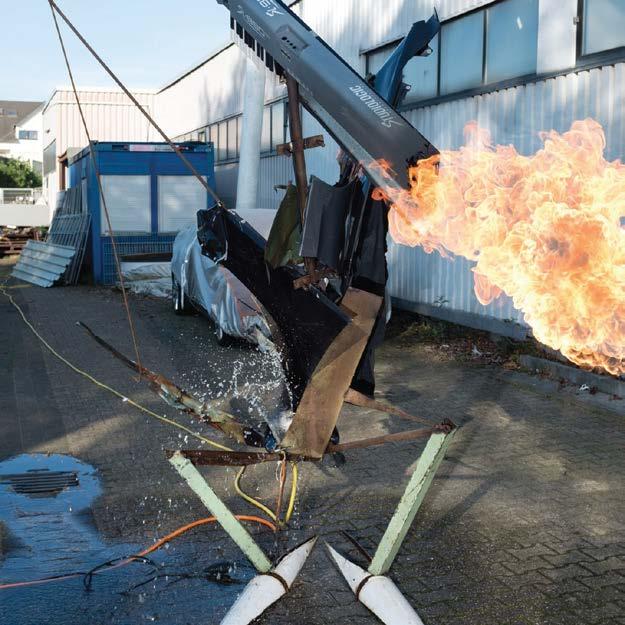
Release date: September 28, 2018
Recorded in Japan alongside gagaku (Japanese classical music) group Tokyo Gakuso, Hecker’s ninth album, Konoyo, is a noticeable departure from the rest of his work. Konoyo’s best moments deftly meld the imperial stylings of gagaku and Hecker’s grand electronic experimentations, creating a new sound and style altogether for the weathered electronic producer.
The album’s massive opener, “This Life,” establishes the mythical tone and momentum, delicately balancing the gagaku instrumentation with Hecker’s psychedelic soundscapes. The next track, “In Death Valley,” amplifies the scale further, harkening back to Hecker’s earlier material with chiming staccato synthesizers stacking upon themselves as the track progresses. These two tracks in particular exemplify Hecker’s holistic approach, which, while being instrumentally or thematically distinct, is built upon the next track, giving his music a grand scale that many of his contemporaries lack.
In Konoyo’s middle section, the elements of gagaku seem tacked on, rather than informing the greater structure of the track, most noticeably on the single “Keyed Out” and the follow-up “In a Mother Earth Phase.” These tracks are meandering, in spite of the elegant straightforwardness of the beginning of Konoyo, yet are still interesting enough to be worthwhile inclusions for the record.
The pacing is quickly regained with “A Sodium Codec Haze,” matching the mythic tone set earlier with Japanese woodwinds, bringing much needed texture and structure. The closing track, “Across to Anoyo,” named after the Japanese term for the realm of the dead, is fittingly eerie. It’s the longest track on Konoyo, justifying its length with a multi-part progression culminating in a dense and satisfying mix of the motifs presented earlier on the album: swirling synthesizers, glitchy interruptions, and interspersed percussion.
As a noticeable experiment long into his career, Konoyo proves that Tim Hecker is still among the most essential artists in the experimental electronic scene. Any fans of experimental or ambient music, even those unacquainted with Hecker’s music, should be sure not to miss Konoyo this year.
Favorite track: “Gatherings” kikagakumoyo.tumblr.com
Favorite track: “A Sodium Codec Haze” sunblind.net
 Written by Taran Escobar-Ausman
Written by Yale Wyatt
Written by Taran Escobar-Ausman
Written by Yale Wyatt
Cinequest 2019 Guide
After becoming the Cinequest Film & VR Festival in 2016, San Jose’s premiere film extravaganza has rebranded itself again as the Cinequest Film & Creativity Festival, incorporating additional creative arts into its repertoire. Whatever the name, it’s still 13 days of movies, parties, celebrities, and memorable experiences. And whether you’re attending for the first time or you’re a regular, the schedule is packed with options. These are the highlights you won’t want to miss this year:
1 OPENING NIGHT
Begin your festival experience with a film screening at the historic California Theatre. This year’s film, Manto, is a biopic written and directed by Bollywood star Nandita Das that follows the life of controversial Indo-Pakistani writer Saadat Hasan Manto. After the screening, Das will be welcomed on stage to receive a Maverick Spirit Award and share her thoughts and experiences around making the film. Then, get ready to party (yes, on a Tuesday night) as you make your way to the Glass House for cocktails, appetizers, and mingling.
2 IT’S ALL ABOUT THE MOVIES
The festival showcases more than 100 feature films and 11 short film programs. These include Spotlight Films, which are special nightly premieres at the California Theatre; movies from all around the world in every genre imaginable; and themed short film programs delivering animation, comedy, student films, and the ever-popular Mindbenders. If the guide seems overwhelming, international cinema is generally a good bet, giving you a chance to see truly remarkable films you’re not likely to see anywhere else.
3 MAVERICK SPIRIT AWARDS
Every year, Cinequest honors icons and innovators in film, entertainment, and other industries through its Maverick Spirit Awards. In addition to Nandita Das, award winners this year will include influential author and educator Esther Wojcicki, founder of the Media Arts Program at Palo Alto High School. Additional awardees will be announced closer to the festival date.
4 VIRTUAL REALITY SHOWCASES
Where better than the Silicon Valley and Cinequest to showcase the latest experiences, games, and film from the emerging world of immersive entertainment? Choose a time slot (around 30 minutes) of VR Cinema Programs, and you’ll also gain access to the VR Experience Lounge. If you haven’t tried VR yet, get ready to see the future. Some of the tech is still in a clunky stage, though, so wear contact lenses if you can, and don’t expect your perfectly styled hair to survive the goggles.
5 POETS N FILM
From animated to documentary, comedic to dramatic, you can see nine distinct shorts programs in this year’s festival. Cinequest is an Academy Awards short film qualifying festival, and this is one of the few opportunities to watch these outstanding mini-movies on the big screen.
6 SOIREES, MEETUPS, AND PARTIES
Each day of the festival, happy hour soirées and late night Maverick Meetups will be the places to go to discuss, debate, and celebrate your favorite films—often with the filmmakers themselves. With social venues in both San Jose and Redwood City and a nightly calendar of meeting places, you’ll be able to connect with fellow film lovers while you explore some of both cities’ best nightlife locations. Passholders also get access to the VIP Lounge, a perfect spot to start the day and relax or socialize while you take a break between events.
7 TV ON THE BIG SCREEN
It’s a new era of entertainment, where web series, television programming, and other outlets are creating high-quality content on par with what you can see at the local cinema. For the first time, Cinequest is presenting an entire program of TV productions, including world and US premieres of movies, episodes, and pilots made for the small screen—but ready to be experienced on the big one.
8 CREATIVITY ON DISPLAY
Another new category of major events at the festival and a reason to broaden the scope of its name, is “Creativity.” This includes an all-new Creativity Summit, which features panel discussions and workshops designed to connect writers, artists, performers, and innovators with members of the community who want to explore their creative instincts.
9 CLOSING NIGHT
Cap off your two week movie binge with a film that’s been more than 30 years in the making: Terry Gilliam’s The Man Who Killed Don Quixote. Gilliam fans are probably aware of the seemingly cursed history of this film, and the fact that it has finally arrived in theaters can be considered something of a miracle. Starring Adam Driver and Jonathan Pryce, the film is funny, fantastical, heartfelt, and strange. Afterwards, celebrate the end of the festival by toasting your newfound film fanatic friends during a closing party at the Corinthian Grand Ballroom.
90 Sight & Sound 11.1
The Cinequest Film & Creativity Festival is March 5-17 in San Jose and Redwood City. Here’s what you need to know.
March 5 - 17, 2019
www.cinequest.org

Passes On Sale
Cinequest’s IMPACT comes through discovery of the best new films, connection with fabulous people at events and parties, inspiration from legends, immersion in virtual reality, and celebration of art and technology. Tickets and Passes now on sale. Check website for complete line-up.

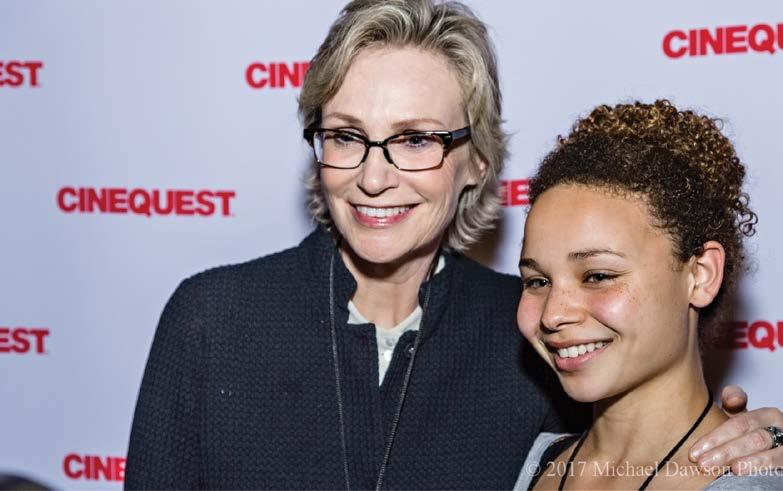



San Jose · Redwood City
08
CONTENT CALENDAR
MAR/APR
01
CMT Mainstage: A Gentleman’s Guide to Love and Murder
This musical comedy is a devious romp filled with unforgettable music and non-stop laughs that will leave you begging for more.
3/1-10 Montgomery Theater cmtsj.org
01 2019 PAL Members Exhibition
Pacific Art League celebrates March featuring our favorite artists: PAL members! This exhibit will display the work of talented Artist Members.
Reception 3/1 5:30pm-8pm Pacific Art League pacificartleague.org
05
Cinequest 2019
CQ’s 29th festival expands to include creative experiences such as virtual and augmented realities, fashion, writing, television, dance, art & design, a creativity summit, and more!
3/5-3/17 various venues
cinequest.org
07
Sound José
A night showcasing the growing San Jose music scene featuring local brews at SJ Flea Market’s new beer garden.
09
Undersoul: Jay DeFeo
This focused exhibition highlights Jay DeFeo’s prolific use of photography to track the artist’s visual vocabulary across media and subject matter.
3/8-7/7 San José Museum of Art sjmusart.org
Over the Moon: 2019 Mardi Gras Gala
Raising vital funds for SJZ performance and education programs with lively New Orleans theme and performance by Post Modern Jukebox sensation Gunhild Carling.
3/9 5:30pm Westin San Jose (Sainte Claire) sanjosejazz.org
Eurydice by Sarah Ruhl
A fresh, modern retelling of the ancient myth from the female point of view.
3/14-4/14 City Lights Theater Company cltc.org
20 Cirque Eloize: Saloon
Open the Saloon doors and enter a mythical world inspired by the rich legacy of the Wild West where theater and circus collide!
3/20 7:30pm Hammer Theatre hammertheatre.com
22 Thingamajigs Group and Syrnx
Musical performances by Thingamagics Group and Syrnx. Join us for snacks music and art.
3/22 7pm Art Ark Gallery artarkgallery.com
22 Poetry Night with Red Light Lit
Closing Reception of Come-hither
Red Light Lit will be reciting their poetry alongside musical performances, inspired by the artwork of Come-hither.
3/22 7-9pm The Art Cave theartcavesc.com
WEEKLY
SUN 7PM–11PM
The Eulipions Jazz Jam Session
The house band led by saxophonist Tim Lin plays a set followed by an open jazz jam. Cafe Stritch cafestritch.com
MON 7PM–9:30PM
Red Rock Open Mic Night
A family-friendly open mic experience that welcomes people of all talents to share and perform their art.
Red Rock Coffee redrockcoffee.org
MON 8PM–11PM Industry Night Hangout for and with the bartenders, beertenders, and cooks with beers, cocktails, food, and live music. Forager sjforager.com
WED 9PM
The Caravan Lounge Comedy Show
Comics from all over the Bay Area and the world perform, hosted by Ato Walker. The Caravan Lounge caravanloungesanjose.com
THURS 7PM–9PM
Live Lit Writers Open Mic
This casual open mic offers a home for poems and stories in all languages over pastries and beverages.
Caffe Frascati pcsj.org
THURS 9PM
The Changing Same
This excursion keeps time with the future of soul, R&B, and jazz through guest DJ sets and live performances. The Continental Bar thecontinentalbar.com
92 Sight & Sound 11.1
#ContentPick
3/7 6pm-10pm Garden at the SJ Flea Market sjcomeup.com and gardenattheflea.com 14
23 Fast Forward
A program of cutting-edge contemporary ballet presented by New Ballet in partnership with the SJSU department of dance.
3/23 2pm and 7pm SJSU Dance Theatre at Spartan Complex newballet.com
03 The Poppy Jasper International Film Festival
Five days of film screenings, speaker panels, mixers, and community events in the historic downtowns of Morgan Hill and Gilroy.
4/3-4/7 Gilroy, San Martin, & Morgan Hill pjiff.org
03
National Geographic Live: Bryan Smith - Capturing the Impossible
For extreme filmmaker Bryan Smith, the line between going for it and going too far is often blurry.
4/3 7:30pm Hammer Theatre hammertheatre.com
05
Queen of the Mist
Musical of how one woman, 63-year old Anna Edson Taylor, went over Niagara Falls in 1901, risking death so she could live.
4/5-28 Tabard Theatre tabardtheatre.org
05
21st LATINO ART NOW!
Celebrate contemporary Latino art with artist meet-and-greet, a lively auction, and local entertainment and food. Auction proceeds support MACLA’s programs.
4/5 – 4/18 Auction: 4/18 MACLA Gallery maclaarte.org
06 Children of the Dragon Festival
Vietnamese culture comes alive with lively music, colorful dances including the popular Lion Dance and hands-on activities.
4/6-4/7 12pm to 4pm
Children’s Discovery Museum cdm.org
MONTHLY
1ST MON 8PM
San Jose Poetry Slam
Slammaster Scorpiana Xlent leads this spoken-word competition that features tasty food, brews, and poetry.
Gordon Biersch pcsj.org
3RD TUES 7PM–10PM
Two-Buck Tuesday
The gallery hosts $2 art sales, along with a combination of performances, live painting, and/or art-making activities.
KALEID Gallery kaleidgallery.com
07
3rd Annual San Jose Day
A day to embrace the city’s diverse culture. SJ Day fuels collaboration by integrating a variety of artists and innovators, musicians, and creators to pay homage to the city.
4/7 1pm-5pm Gordon Biersch Brewery bayareacreativesklub.com
10
Disney’s Aladdin
From the producer of The Lion King comes the timeless story of ALADDIN, a thrilling new production filled with beauty, magic, comedy and breathtaking spectacle.
4/10-21 Center for the Performing Arts broadwaysanjose.com
11
Speak Easy: A Free Standup Comedy Affair A not-so-secret comedy show set in the backroom of Clandestine Brewing in downtown San Jose! Hosted by Ryan Goodcase and Ryan Sudhakaran.
4/11 8pm Clandestine Brewing facebook.com/speakeasycomedyshow
13 Paseo Prototyping Challenge - SJSU Student teams present their civic innovation prototypes as part of a six-month project addressing the social and environmental challenges of San Jose.
4/13 All Day Hammer Theatre hammertheatre.com
24 Content Pick-Up Party 11.2
A celebration of music, food, and innovators who contribute to the tech industry in the South Bay.
4/24 7:00pm-9:30pm San Jose Improv content-magazine.com
27 Bay Area Printers’ Fair & Wayzgoose
Print a wood type poster or make your own book. Shop the marketplace. Celebrate letterpress, printmaking and bookarts. Free!
4/27 10am-3pm History Park sjprintersguild.com
*Events are subject to change. Please confirm event details with the presenting organization or venue.
LAST TUES 7PM
Nerd Nite Silicon Valley
A great night of (sometimes ridiculous but) thoughtprovoking presentations with drinks. The Tabard Theater fb.com/NerdNiteSiliconValley
3RD THURS 6PM
Brews & Beats
Diners can enjoy hip-hop and craft beer culture with beats provided by resident DJs Mr Choe and Cutfresh. Park Station Hashery parkstationhashery.com
3rD THUR 8PM
Boss Fight: Standup Comedy A next level free comedy show in the basement of a video game store! Gameshop Downstairs bit.ly/bossfightcomedy
2ND SAT 6PM–9PM
Songwriter Saturday Showcase Coffee is served while local songwriters perform. New Crema Coffee facebook.com/ songwritersaturday
93 C
CONTRIBUTORS
The production of CONTENT MAGAZINE would not be possible without the talented writers, editors, graphic artists, and photographers who contribute to each issue. We thank you and are proud to provide a publication to display your work. We are also thankful for the sponsors and readers who have supported this magazine through advertisements and subscriptions.
Be a part of the CONTENT community.
Contact us at: Editor@content-magazine.com
KEVIN B. MARKS

Kevin is a writer, musician, and collector of weird lounge and surf vinyl. His first book—a memoir told through pop music—will be published in early 2019. You can find him jogging on the Los Gatos Creek Trail with his wife or at home telling his two sons, “STOP THAT!”
Esther is a recent graduate from Santa Clara University, where she grew her love for interviewing artists. She has written for Santa Clara Magazine, Made @ The Tech, and Palo Alto Weekly instagram: eestarrious

CATHLEEN MILLER
Cathleen Miller is a bestselling author, director of the Center for Literary Arts, editor-in-chief of Reed Magazine, and was named a 2017 Artist Laureate by SVCreates Her books include Champion of Choice, The Birdhouse Chronicles, and Desert Flower, which has been adapted as a feature film.

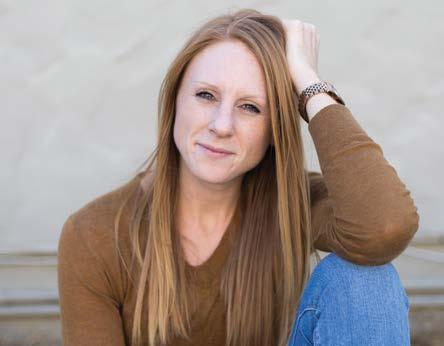
facebook: authorcathleenmiller
BRIAN RAMPAS
Residing in Sunnyvale, Brian is a creative who loves taking photos and videos either through roaming the streets with friends or by composing portraits. He lives through coffee and beer.
instagram: brianrampas
BRANDON YU

Brandon is a Bay Area-based journalist and San Jose native. He covers arts stories and is a books columnist for the San Francisco Chronicle
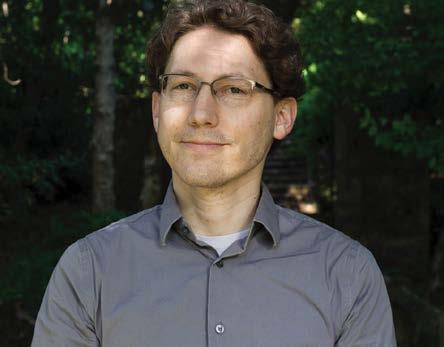

KRISTEN PFUND
Kristen oversees CONTENT events and builds community partnerships. In her downtime, she can be found exploring local trails and trying to pet the un-petable wildlife.
instagram: kristen_pfund
LISA MENDRICKS

Lisa loves writing, editing, and art. She is currently working on her first book, My Story, and runs an art party business called The Art Gathering.
NATHAN ZANON
Nathan has called San Jose home since the turn of the century. He works in social media, devotes much of his time to nonprofits, and is an advocate of the arts, community activism, and great movies. If possible, he would like to take a photograph of your dog.
instagram: nathanzzzzzzz
94 Sight & Sound 11.1
ESTHER YOUNG




Banking with your best interests at heart. techcu.com ©Technology Credit Union. Federally insured by NCUA. Seasonal Coffee, Tea, & Artisanal Pastries Monday - Friday: 7:00 am - 5:00 pm Saturday & Sunday: 7:00 am - 5:00 pm 499 S. 2nd Street, San Jose, CA www.academiccoffee.com
10 HANDCRAFTED BEERS ON TAP
BEER TO-GO, SPECIALTY CANS, GROWLER AND CROWLER FILLS AND DELICIOUS FOOD TO GO WITH IT FROM
MOLLIE’S CATERING: TUE-SAT
 ALMA JACKSON 'S BAY AREA SOUL FOOD: SUNDAY BRUNCH
ALMA JACKSON 'S BAY AREA SOUL FOOD: SUNDAY BRUNCH
718 S 1ST STREET, SAN JOSE - CAMINOBREWING.COM - INSTA & FB @CAMINOBREWING

CREATE : CONNECT : SAN JOSE


www.sanjoseculture.org
Photography by David Hill
Laura Kimpton with Jeff Schomberg, XO
The City of San José Office of Cultural Affairs in partnership with Burning Man Project proudly presents two new works by artist Laura Kimpton as part of Playa to Paseo, an initiative bringing art from Burning Man to Downtown San José.
XO is located at San Jose City Plaza and Ha Ha is located at Hammer Theatre Plaza.








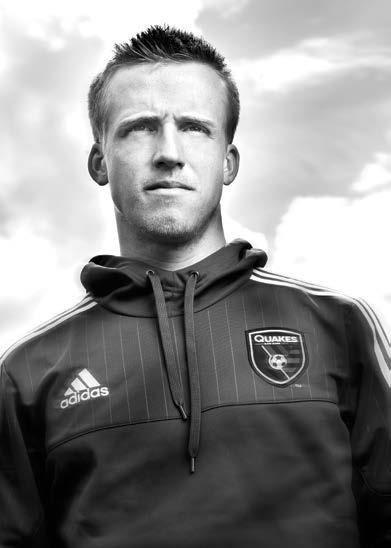



arts & culture subscribe C south bay CONTENT #supportlocal www.content-magazine.com
NEXT ISSUE Device 11.2 Pick-Up Party April 24th 7:00pm-9:30pm San Jose Improv SAN JOSE 2019 WWW.CONTENT-MAGAZINE.COM social media: contentmag ANNUAL SUBSCRIPTION- $42.00 SINGLE ISSUE- $9.95 SUBSCRIBE www.content-magazine.com SILICON VALLEY’S INNOVATIVE & CREATIVE CULTURE made in san jose, ca













 Chief Executive Officer Suzanne St. John-Crane
Chief Impact Officer Jenny Niklaus, MA, LMFT
Chief Executive Officer Suzanne St. John-Crane
Chief Impact Officer Jenny Niklaus, MA, LMFT
 Written by Hannah Duchesne
Written by Hannah Duchesne

















 Written by Cathleen Miller
Photography by Daniel Garcia Pamela Pennington Studios pamelapenningtonstudios.com Social Media
Written by Cathleen Miller
Photography by Daniel Garcia Pamela Pennington Studios pamelapenningtonstudios.com Social Media




 General Manager Dan Reineke
General Manager Dan Reineke







 Ramona Giwargis
Ramona Giwargis












 Dan Fenstermacher
Dan Fenstermacher














 Troy Campione (Madison Campione, not pictured, away at USC School of Cinematic Arts)
Written by Johanna Hickle
Photography by Brian Rampas
Troy Campione (Madison Campione, not pictured, away at USC School of Cinematic Arts)
Written by Johanna Hickle
Photography by Brian Rampas














 Ryan Sudhakaran | Tyler Stannard
| Grayson Garcia | Austin Blaylock
Ryan Sudhakaran | Tyler Stannard
| Grayson Garcia | Austin Blaylock



 Instagram: ry_suds
Ryan Sudhakaran
Instagram: grayson_garcia
Grayson Garcia
Instagram: tylerstannardcomedy
Tyler Stannard
Instagram: austinblaylock
Austin Blaylock
Instagram: ry_suds
Ryan Sudhakaran
Instagram: grayson_garcia
Grayson Garcia
Instagram: tylerstannardcomedy
Tyler Stannard
Instagram: austinblaylock
Austin Blaylock
















 Written by Taran Escobar-Ausman
Written by Yale Wyatt
Written by Taran Escobar-Ausman
Written by Yale Wyatt


















 ALMA JACKSON 'S BAY AREA SOUL FOOD: SUNDAY BRUNCH
ALMA JACKSON 'S BAY AREA SOUL FOOD: SUNDAY BRUNCH















